
- Home
- Travel Packages
- Top Destination
-
Travel Attraction
By Category
Top Attraction

- Travel Agents
- Car Rentals
- Hotels
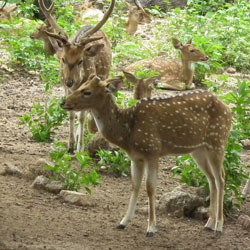
About Nehru Zoological Park Nehru Zoological Park, located in Hyderabad, Telangana, is one of the largest zoos in India. It covers an area of 380 acres and is home to a wide variety of species, both flora, and fauna. The zoo was established in 1959 and is named after Jawaharlal Nehru, the first Prime Minister of India. Location and Geographical Overview Nehru Zoological Park is situated near Mir Alam Tank in the Bahadurpura area of Hyderabad. The park is surrounded by lush greenery and offers a serene environment for both visitors and the animals residing in the zoo. Open and Closing Time The zoo is open to visitors from 8:00 am to 5:00 pm every day of the week, including public holidays. Entry Fee The entry fee for Nehru Zoological Park is INR 50 for adults and INR 30 for children (3-10 years). Foreign tourists are charged INR 100 for entry. Species-Flora/Fauna Availability Nehru Zoological Park houses a diverse range of wildlife, including mammals, birds, reptiles, and amphibians. Visitors can also explore the lush botanical garden featuring a variety of plant species. Activities Performed Visitors to the zoo can enjoy activities such as animal feeding sessions, bird watching, and guided tours. There are also educational programs and interactive exhibitions for both children and adults. Jeep Safari Charges Nehru Zoological Park offers jeep safaris for visitors to explore the vast expanse of the park and observe the animals in their natural habitat. The charges for a jeep safari are INR 500 per person. Age Criterion and Entry Fee Entry fees for Nehru Zoological Park vary based on age: for males above 10 years, the fee is INR 50; for females above 10 years, it is INR 30; and for children between 3-10 years, the fee is INR 20. Children below 3 years of age can enter for free. Senior Citizen Facilities Nehru Zoological Park offers special facilities for senior citizens, including discounted entry fees and wheelchair accessibility to ensure a comfortable and enjoyable visit. Best Time to Visit The best time to visit Nehru Zoological Park is during the winter months, from November to February, when the weather is pleasant and conducive for exploring the zoo and enjoying outdoor activities. Nearby Places to Visit While in Hyderabad, visitors can explore nearby attractions such as Charminar, Golconda Fort, and Hussain Sagar Lake. These iconic landmarks offer a glimpse into the rich history and culture of the city. Vehicle Parking Facility Nehru Zoological Park provides ample parking space for visitors arriving by car or motorcycle. The parking facility is well-maintained and secure, ensuring the safety of vehicles during the visit. Rules and Regulations Visitors are required to follow certain rules and regulations while at Nehru Zoological Park, including refraining from littering, feeding the animals, or causing any harm to the wildlife. Photography is allowed, but using flash is prohibited as it may disturb the animals. How to Reach and Other Related Information Nehru Zoological Park is easily accessible by public transport such as buses and auto-rickshaws. The nearest railway station is the Hyderabad Deccan Railway Station, located approximately 8 km away. For those traveling by air, Rajiv Gandhi International Airport is situated around 25 km from the zoo. Overall, Nehru Zoological Park offers a memorable and educational experience for visitors of all ages, with its diverse wildlife, lush greenery, and engaging activities. Whether you're a nature enthusiast, animal lover, or simply looking to unwind amidst nature, a visit to this iconic zoo in Hyderabad is sure to leave you captivated and enriched.
Explore More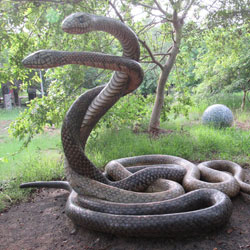
About Snake Park The Snake Park in Chennai is a popular tourist attraction that offers visitors the opportunity to see a wide variety of snake species up close. It is located in the Guindy National Park and is home to a diverse range of flora and fauna in addition to its resident snakes. The park plays a crucial role in educating the public about snakes and their importance in the ecosystem. Location and Geographical Overview The Snake Park is located in Guindy, which is a neighborhood in the southwestern part of Chennai, Tamil Nadu. It is situated within the Guindy National Park, which is one of the smallest national parks in India but boasts a rich biodiversity. The park is easily accessible by road and is a short drive from the city center. Open and Closing Time The Snake Park is open to visitors from 8:30 AM to 5:30 PM every day of the week, including weekends and public holidays. It is advisable to arrive early to make the most of your visit and avoid the crowds. Entry Fee The entry fee to the Snake Park is Rs. 20 for adults and Rs. 10 for children. Senior citizens and students with valid ID cards are eligible for a discounted rate of Rs. 10. Children under the age of 5 are allowed entry free of charge. Species-Flora/Fauna Availability In addition to a wide variety of snake species, the Snake Park is home to a diverse range of flora and fauna. Visitors can see different types of trees, plants, and animals indigenous to the region, making it a great destination for nature lovers. Activities Performed Visitors to the Snake Park can participate in a range of activities, including guided tours, snake shows, and educational demonstrations. The park also offers interactive exhibits and informative displays that teach visitors about the importance of snakes in the ecosystem. Jeep Safari Charges The Snake Park offers a thrilling jeep safari experience for visitors who want to explore the surrounding wilderness. The charges for a jeep safari vary depending on the duration and route chosen, with prices starting at Rs. 500 per person. Age Criterion and Entry Fee Visitors of all ages are welcome at the Snake Park. The entry fee for male and female visitors is Rs. 20, while children aged 5-12 are charged Rs. 10. Children under 5 are allowed free entry. Senior citizens aged 60 and above can enter at a discounted rate of Rs. 10. Senior Citizen Facilities The Snake Park is accessible for senior citizens and offers facilities such as seating areas, restrooms, and shaded spots for resting. Wheelchair access is available, and staff members are on hand to assist elderly visitors as needed. Best Time to Visit The best time to visit the Snake Park is during the cooler months of the year, from November to March. The weather is pleasant, and the snakes are more active during this time, making it an ideal time for viewing them in their natural habitat. Nearby Places to Visit There are several attractions near the Snake Park that visitors can explore, such as the Guindy National Park, Guindy Race Course, and the Madras War Cemetery. The historic Guindy Lodge and Raj Bhavan are also worth a visit. Vehicle Parking Facility The Snake Park offers ample parking space for visitors who arrive by car or motorcycle. The parking area is secure and monitored by staff members to ensure the safety of vehicles and belongings. Rules and Regulations Visitors to the Snake Park are required to follow certain rules and regulations to ensure the safety of themselves and the wildlife. Some of the rules include not feeding the animals, not littering, and not disturbing the snakes or other creatures in the park. How to Reach and Other Related Information The Snake Park is easily accessible by road from various parts of Chennai. Visitors can take a taxi, auto-rickshaw, or public bus to reach the park. The nearest railway station is Guindy, which is just a short distance away. It is advisable to plan your visit in advance and check for any updates or changes in the park's timings or regulations.
Explore More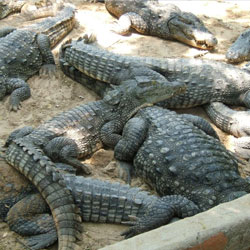
About Crocodile Bank The Madras Crocodile Bank Trust and Centre for Herpetology, commonly known as the Crocodile Bank, is a reptile zoo and research center located in Chennai, Tamil Nadu. It was established in 1976 by herpetologist Romulus Whitaker and is home to a large collection of reptiles, including crocodiles, alligators, snakes, and turtles. The Crocodile Bank is dedicated to conservation efforts and educating the public about these fascinating creatures. Location and Geographical Overview The Crocodile Bank is located in the town of Vadanemmeli, about 40 kilometers south of Chennai. Situated along the East Coast Road, the center is easily accessible by road. The lush green surroundings and proximity to the Bay of Bengal make it a picturesque location for visitors to enjoy. Open and Closing Time The Crocodile Bank is open to visitors from 8:30 am to 5:30 pm every day of the week, including weekends and holidays. It is advisable to arrive early to make the most of your visit and avoid the heat of the afternoon. Entry Fee The entry fee for adults is Rs. 50, while children under 10 years of age can enter for Rs. 30. Students with a valid ID card can avail of a discounted rate of Rs. 30. Foreign tourists are charged Rs. 200 for entry. Species-Flora/Fauna Availability The Crocodile Bank is home to a diverse range of reptiles, including crocodiles, alligators, snakes, and turtles. Visitors can learn about these fascinating creatures and their habitats through interactive exhibits and educational displays. The center also boasts a variety of native flora that adds to the natural beauty of the surroundings. Activities Performed Visitors to the Crocodile Bank can enjoy a range of activities, including guided tours, snake handling demonstrations, and feeding sessions for various reptiles. The center also offers educational programs for schools and groups, as well as research opportunities for students and scholars interested in herpetology. Jeep Safari Charges The Crocodile Bank offers a thrilling jeep safari through the surrounding forests and wetlands, allowing visitors to spot wildlife in their natural habitat. The safari charges vary depending on the duration and distance covered, with rates starting at Rs. 500 per person. Age Criterion and Entry Fee For males and females, the entry fee remains the same as mentioned earlier. Children under 10 years of age can enter for Rs. 30. Senior citizens are also charged Rs. 30 for entry to the Crocodile Bank. Senior Citizen Facilities Senior citizens visiting the Crocodile Bank can avail of special facilities, including designated seating areas, wheelchair access, and discounts on entry fees. The staff at the center are trained to assist elderly visitors and ensure their comfort during their visit. Best Time to Visit The best time to visit the Crocodile Bank is during the cooler months of the year, from November to February. The weather is more pleasant during this time, making it ideal for exploring the outdoor exhibits and enjoying the jeep safari. Avoid visiting during the peak summer months when temperatures can soar. Nearby Places to Visit Located along the scenic East Coast Road, the Crocodile Bank is close to several other attractions, including Mahabalipuram, a UNESCO World Heritage Site known for its ancient temples and rock carvings. Visitors can also explore the coastal town of Pondicherry, famous for its French colonial architecture and tranquil beaches. Vehicle Parking Facility The Crocodile Bank offers ample parking space for visitors arriving by car or motorcycle. The parking area is well-maintained and secure, providing peace of mind while you explore the center and its surroundings. Rules and Regulations While visiting the Crocodile Bank, visitors are expected to follow certain rules and regulations to ensure their safety and the well-being of the animals. This includes refraining from feeding or disturbing the animals, maintaining a safe distance from enclosures, and disposing of waste in designated bins. Smoking and littering are strictly prohibited on the premises. How to Reach and Other Related Information The Crocodile Bank is easily accessible by road from Chennai, with regular bus services and taxis available for transportation. For those driving to the center, follow the East Coast Road towards Mahabalipuram and look out for signposts indicating the entrance to the Crocodile Bank. The nearest railway station is at Chengalpattu, approximately 30 kilometers away, and the nearest airport is Chennai International Airport, about 45 kilometers from the center. Plan your visit to the Crocodile Bank and immerse yourself in the fascinating world of reptiles and conservation. Enjoy a day surrounded by nature and learn about these incredible creatures while supporting important conservation efforts.
Explore More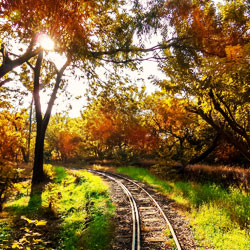
About Sanjay Gandhi National Park The Sanjay Gandhi National Park is a lush green paradise located in the northern part of Mumbai, India. Covering an area of 104 square kilometers, this national park is one of the most visited parks in the country and is a popular destination for nature lovers, adventure enthusiasts, and wildlife enthusiasts. The park is named after Sanjay Gandhi, the son of former Prime Minister of India, Indira Gandhi. Location and Geographical Overview The Sanjay Gandhi National Park is situated in the suburban district of Mumbai, covering areas of Borivali and Thane. The park is surrounded by hills and forests, providing a serene and peaceful environment for visitors to enjoy nature at its best. The park is home to a variety of flora and fauna, making it a biodiversity hotspot in the region. Open and Closing Time The Sanjay Gandhi National Park is open to visitors from 7:30 am to 6:30 pm every day of the week, including weekends and public holidays. The park closes at 6:30 pm, and visitors are not allowed to enter after this time. Entry Fee The entry fee for the Sanjay Gandhi National Park is INR 68 for adults and INR 38 for children. Senior citizens above the age of 65 can enter the park for free with a valid ID card. Foreign tourists have to pay INR 338 for entry. Species-Flora/Fauna Availability The Sanjay Gandhi National Park is home to a wide variety of flora and fauna. The park is famous for its rich biodiversity, with over 1,300 species of plants, 251 species of birds, 40 species of mammals, and 38 species of reptiles. Some of the animals found in the park include leopards, spotted deer, macaques, langurs, and Indian flying foxes. Activities Performed Visitors to the Sanjay Gandhi National Park can indulge in a range of activities such as nature walks, trekking, picnicking, bird watching, and cycling. The park also offers boating facilities at the Tulsi Lake and Vihar Lake, allowing visitors to enjoy a peaceful boat ride amidst the serene surroundings. Jeep Safari Charges The park also offers jeep safari rides for visitors who want to explore the park's wilderness and spot rare wildlife. The jeep safari charges are INR 800 per person for a 30-minute ride, allowing visitors to get up close and personal with the park's inhabitants. Age Criterion for Male, Female, Children and their Entry Fee The entry fee for the Sanjay Gandhi National Park is INR 68 for male adults, female adults, and children above the age of 5. Children below the age of 5 can enter the park for free. Senior citizens above the age of 65 can enter the park for free with a valid ID card. Senior Citizen Facilities Senior citizens above the age of 65 are entitled to free entry to the Sanjay Gandhi National Park with a valid ID card. The park provides special facilities for senior citizens, including wheelchair accessibility, resting areas, and designated walking trails for a comfortable and enjoyable visit. Best Time to Visit The best time to visit the Sanjay Gandhi National Park is during the winter months of November to February when the weather is pleasant and cool. The park is lush and green during this time, making it ideal for outdoor activities and wildlife spotting. Nearby Places to Visit There are several attractions near the Sanjay Gandhi National Park that visitors can explore, including the Kanheri Caves, a group of ancient Buddhist rock-cut caves dating back to the 1st century BC. Other nearby attractions include the Global Vipassana Pagoda, Film City, and Yeoor Hills. Vehicle Parking Facility The Sanjay Gandhi National Park provides ample parking facilities for visitors, with designated parking areas available near the park's entrance. Visitors can park their cars or bikes securely and conveniently while they explore the park's attractions and activities. Rules and Regulations Visitors to the Sanjay Gandhi National Park are required to follow certain rules and regulations to ensure the safety of wildlife and maintain the park's ecological balance. Some of the rules include not feeding the animals, not littering, not making loud noises, and not plucking flowers or plants. How to Reach and Other Related Information The Sanjay Gandhi National Park is easily accessible by road and public transport. Visitors can take a taxi, bus, or auto-rickshaw to reach the park from various parts of Mumbai. The nearest railway station to the park is Borivali, which is well-connected to other parts of the city. The park also has facilities like restrooms, food stalls, and information centers to cater to the needs of visitors. Overall, the Sanjay Gandhi National Park is a must-visit destination for nature lovers, wildlife enthusiasts, and adventure seekers looking to experience the beauty of Mumbai's natural landscape. With its diverse flora and fauna, exciting activities, and serene surroundings, the park offers a unique and memorable experience for visitors of all ages.
Explore More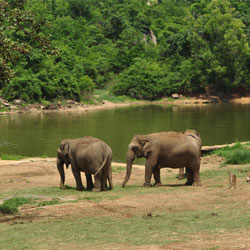
About Bannerghatta National Park Located in Bangalore, Karnataka, the Bannerghatta National Park is a popular destination for nature lovers and wildlife enthusiasts. Spread over 104.27 square kilometers, the park is home to a variety of flora and fauna, making it a must-visit for anyone looking to experience the beauty of nature up close. Location and Geographical Overview The Bannerghatta National Park is situated approximately 22 kilometers south of Bangalore city. It is nestled in the picturesque surroundings of the Champakadhama Hills, providing a serene and peaceful environment for visitors to explore. The park is divided into several sections, including a zoo, a butterfly park, a safari area, and a rescue center. Opening and Closing Time The park is open to visitors from 9:00 AM to 5:00 PM on all days of the week, except for Tuesdays when it remains closed for maintenance. Entry Fee The entry fee for the Bannerghatta National Park varies based on the activities you choose to engage in. The basic entry fee for adults is INR 80, while children have a discounted rate of INR 40. Additional charges apply for activities such as safaris and the butterfly park. Species - Flora/Fauna Availability The park is home to a diverse range of flora and fauna, including various species of plants, trees, birds, mammals, and reptiles. Visitors can spot animals such as tigers, lions, elephants, bears, deer, and more in their natural habitat within the park. Activities Performed Visitors to the Bannerghatta National Park can engage in a variety of activities, including wildlife safaris, nature walks, bird watching, butterfly park visits, and more. The park offers a range of experiences for visitors of all ages and interests. Jeep Safari Charges The jeep safari at the park is a popular attraction that allows visitors to explore the wilderness and spot animals in their natural habitat. The charges for the jeep safari vary based on the type of safari chosen, with rates starting from INR 250 per person. Age Criterion and Entry Fee The entry fee for the park is determined based on the age of the visitor. Adult visitors are required to pay INR 80, while children between the ages of 6-12 are charged INR 40. Children under the age of 6 are granted free entry to the park. Senior Citizen Facilities The Bannerghatta National Park offers special facilities for senior citizens, including discounted entry rates, wheelchair accessibility, and designated resting areas for them to relax and enjoy the beauty of the park. Best Time to Visit The best time to visit the Bannerghatta National Park is during the winter months, from November to February, when the weather is pleasant and ideal for outdoor activities. Avoid visiting during the monsoon season, as heavy rainfall can disrupt your experience. Nearby Places to Visit While in the vicinity of the Bannerghatta National Park, visitors can explore other attractions such as the Bannerghatta Biological Park, the Butterfly Park, the Suvarna Mukhi Pond, and the Champakadhama Swamy Temple for a complete day of sightseeing and adventure. Vehicle Parking Facility The park provides ample parking space for visitors who arrive in their vehicles. The parking facility is safe and secure, ensuring that your vehicle remains protected while you explore the park and its various attractions. Rules and Regulations Visitors to the Bannerghatta National Park are required to follow certain rules and regulations to ensure the safety of the wildlife and maintain the cleanliness of the park. It is prohibited to feed the animals, litter the park, make loud noises, or disturb the natural habitat in any way. How to Reach and Other Related Information The Bannerghatta National Park is easily accessible by road from Bangalore city, with regular bus services and taxis available to transport visitors to the park. It is approximately a one-hour drive from the city center, making it a convenient day trip destination for tourists and locals alike. Overall, the Bannerghatta National Park offers a unique and immersive experience for nature lovers, wildlife enthusiasts, and families looking to connect with the beauty of the natural world. With its diverse range of flora and fauna, exciting activities, and serene surroundings, the park is a must-visit destination for anyone seeking a memorable and enriching outdoor adventure.
Explore More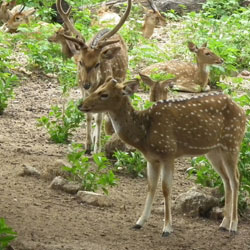
About Deer Park The Deer Park in Hyderabad is a popular tourist destination located in the heart of the city. It is a sprawling green oasis that is home to a variety of flora and fauna, including graceful deer that roam freely within the park. The park offers a serene and peaceful environment, making it a perfect place to unwind and connect with nature. Location and Geographical Overview The Deer Park is located in the heart of Hyderabad, near HITEC City. It covers an area of around 80 acres and is surrounded by lush greenery, making it a beautiful and tranquil spot for visitors to enjoy. Open and Closing Time The Deer Park is open to visitors from 8:00 AM to 6:00 PM every day of the week. Entry Free There is no entry fee to visit the Deer Park, making it accessible to all visitors. Species-Flora/Fauna Availability The park is home to a variety of flora and fauna, including various species of deer, peacocks, and other birds. Visitors can also spot different types of trees, plants, and flowers within the park. Activities Performed Visitors to the Deer Park can enjoy activities such as walking, bird-watching, and photography. The park also offers a serene environment for meditation and relaxation. Jeep Safari Charges The Deer Park does not offer jeep safari rides at the moment. Age Criterion for Male, Female, Children and Their Entry Fee There is no specific age criterion for entry to the Deer Park, and visitors of all ages are welcome. The entry fee is also free for all visitors. Senior Citizen Facilities The Deer Park provides facilities for senior citizens, including benches and shaded areas where they can rest and relax while enjoying the natural surroundings. Best Time to Visit The best time to visit the Deer Park is during the early morning or late afternoon when the weather is cooler and the wildlife is more active. Nearby Places to Visit Some nearby places to visit include Shilparamam Cultural Society, Durgam Cheruvu, and Botanical Gardens, which are all within a short driving distance from the Deer Park. Vehicle Parking Facility The Deer Park offers ample parking space for visitors who wish to drive to the park. The parking facility is safe and secure, allowing visitors to enjoy their visit without any concerns. Rules and Regulations Visitors to the Deer Park are required to follow certain rules and regulations to ensure the safety of the wildlife and other visitors. Some of the rules include not feeding the animals, maintaining cleanliness, and not causing any disturbance to the natural environment. How to Reach and Other Related Information The Deer Park is easily accessible by road, and visitors can reach the park by car, taxi, or public transportation. It is located near HITEC City, making it a convenient destination for both locals and tourists. The park is well-maintained and offers a peaceful retreat for those looking to escape the hustle and bustle of the city.
Explore More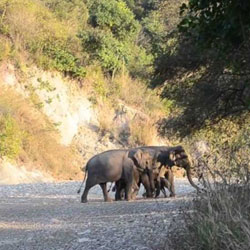
About Rajaji National Park Rajaji National Park, located near Dehradun in the state of Uttarakhand, is a magnificent wildlife sanctuary that spans across three districts - Haridwar, Dehradun, and Pauri Garhwal. It was established in 1983 and covers an area of 820 square kilometers, making it one of the largest national parks in India. The park is named after C. Rajagopalachari, a prominent leader of the Indian independence movement. Location and Geographical Overview Rajaji National Park is situated at the foothills of the Shivalik range in the Himalayas. The park is known for its diverse terrain, which includes dense forests, grasslands, and riverine vegetation. The park is home to a variety of wildlife species, including elephants, tigers, leopards, deer, and over 400 species of birds. Open and Closing Time The park is open to visitors from 6:00 AM to 9:00 PM every day of the week. Entry Fee The entry fee for Indian nationals is Rs. 150 per person, while foreign nationals are charged Rs. 600 per person. Children below the age of 5 years can enter for free. Species-Flora/Fauna Availability Rajaji National Park is home to a diverse range of flora and fauna. The park is known for its rich biodiversity, with over 300 species of birds, 50 species of mammals, and numerous reptiles and amphibians. Some of the wildlife species that can be spotted in the park include elephants, tigers, leopards, deer, monkeys, and bears. Activities Performed Visitors to Rajaji National Park can indulge in a variety of activities, including jeep safaris, elephant safaris, bird watching, nature walks, and wildlife photography. The park also offers opportunities for camping and trekking. Jeep Safari Charges The cost of a jeep safari in Rajaji National Park is Rs. 1500 per jeep for Indian nationals and Rs. 4000 per jeep for foreign nationals. The safari lasts for approximately 3-4 hours and covers various parts of the park where you can spot wildlife in their natural habitats. Age Criterion and Entry Fee for Male, Female, and Children The entry fee for Indian nationals is Rs. 150 per person for adults and children above the age of 5 years. Children below the age of 5 can enter for free. There is no separate entry fee based on gender. Senior Citizen Facilities Senior citizens above the age of 60 years can avail a discount on the entry fee by showing valid identification. They can also opt for a comfortable safari vehicle with seating arrangements that are suitable for their needs. Best Time to Visit The best time to visit Rajaji National Park is from November to March when the weather is pleasant and wildlife sightings are more common. Avoid visiting during the monsoon season (July-September) as the park may be closed due to heavy rainfall and slippery roads. Nearby Places to Visit There are several tourist attractions near Rajaji National Park that you can visit, including Robber's Cave, Buddha Temple, Sahastradhara, and the famous hill station of Mussoorie. Vehicle Parking Facility Rajaji National Park provides ample parking space for private vehicles near the entry gates. Visitors can safely park their cars and continue their exploration of the park in safari vehicles provided by the park authorities. Rules and Regulations Visitors to Rajaji National Park are required to follow certain rules and regulations to ensure the safety of wildlife and maintain the sanctity of the park. Some of the rules include maintaining silence during safaris, not feeding the animals, and not littering the park premises. How to Reach and Other Related Information Rajaji National Park is well-connected by road and can be easily reached from major cities like Dehradun and Haridwar. The nearest airport is the Jolly Grant Airport in Dehradun, which is approximately 20 kilometers away from the park. The nearest railway station is in Haridwar, which is around 30 kilometers from the park. Visitors can also opt for guided tours and packages offered by various tour operators in the region for a hassle-free visit to the park. It is advisable to book safari tickets in advance to avoid any last-minute rush. Plan your visit to Rajaji National Park to experience the beauty of nature and witness the majestic wildlife that thrives in this lush sanctuary.
Explore More
About Dachigam National Park Dachigam National Park is a stunning wildlife sanctuary located in the state of Jammu and Kashmir in India. The name "Dachigam" translates to "ten villages," referencing the ten villages that were relocated to create the park in 1910. The park covers an area of approximately 141 square kilometers and is nestled in the beautiful Dachigam Valley, surrounded by the mighty Himalayas. Location and Geographical Overview Dachigam National Park is situated at a distance of about 22 kilometers from Srinagar, the summer capital of Jammu and Kashmir. The park is spread across the elevated slopes of the Zabarwan Mountain Range and is home to a diverse range of flora and fauna. Opening and Closing Time The park is open to visitors from 6:00 am to 5:00 pm on all days of the week, except for Fridays. Entry Fee The entry fee for Indian visitors is Rs. 50 per person, while foreign tourists are charged Rs. 300 per person. Children below the age of 5 years can enter the park for free. Species-Flora/Fauna Availability Dachigam National Park is renowned for its rich biodiversity. The park is home to a variety of flora, including coniferous forests, alpine pastures, and meadows. As for fauna, the park is known for its population of the endangered Hangul (Kashmir Stag), leopards, musk deer, Himalayan black bear, and various bird species. Activities Performed Visitors to Dachigam National Park can enjoy various activities such as wildlife viewing, bird watching, nature walks, and trekking. The park offers a tranquil environment for nature enthusiasts to explore and appreciate the beauty of the Himalayan ecosystem. Jeep Safari Charges Jeep safaris are available for visitors to explore the park and spot wildlife in their natural habitat. The charges for a jeep safari in Dachigam National Park may vary, and it is advisable to inquire at the park entrance or visitor center for current rates. Age Criterion and Entry Fee For male and female visitors, there is no specific age criterion for entry into the park. Children below the age of 5 years can enter for free, while those above 5 years are required to pay the applicable entry fee. Senior Citizen Facilities Dachigam National Park welcomes senior citizens to visit and explore the park. Special arrangements such as seating areas, resting points, and accessible pathways are provided to ensure a comfortable experience for senior visitors. Best Time to Visit The best time to visit Dachigam National Park is during the summer months from May to August, when the weather is pleasant, and wildlife sightings are more common. The park is typically closed during the winter months due to heavy snowfall. Nearby Places to Visit While visiting Dachigam National Park, visitors can also explore other popular destinations in the region such as Mughal Gardens, Dal Lake, Shankaracharya Temple, and Pari Mahal. These attractions offer a glimpse into the rich cultural and historical heritage of Kashmir. Vehicle Parking Facility Ample parking facilities are available near the entrance of Dachigam National Park for visitors who prefer to drive to the park. Visitors are advised to follow parking regulations and avoid blocking access points to ensure a smooth flow of traffic. Rules and Regulations Visitors to Dachigam National Park are required to adhere to certain rules and regulations to ensure the preservation of the park's ecosystem. Some common guidelines include not littering, refraining from feeding wildlife, and following designated pathways to avoid disturbing the natural habitat. How to Reach and Other Related Information Dachigam National Park is easily accessible from Srinagar by road, and taxis or private vehicles can be hired to reach the park entrance. The nearest airport is Srinagar International Airport, located approximately 28 kilometers away. For accommodations, visitors can choose from a range of hotels and guesthouses in Srinagar city. Overall, Dachigam National Park offers a unique opportunity to witness the natural beauty and wildlife of the Himalayan region. Whether you are a nature lover, wildlife enthusiast, or simply seeking a peaceful retreat, a visit to this spectacular park is sure to leave you spellbound.
Explore More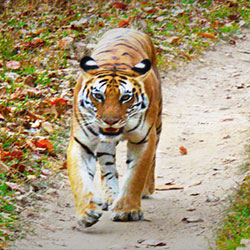
About Kanha National Park Kanha National Park is a renowned wildlife sanctuary located in the Mandla district of Madhya Pradesh, India. It is one of the largest national parks in India, covering an area of 940 square kilometers. Established in 1955, the park is famous for its diverse range of flora and fauna, including the majestic Royal Bengal Tiger. The lush green forests, meadows, and streams make it a haven for nature lovers and wildlife enthusiasts. Location and Geographical Overview Kanha National Park is situated in the Maikal Hills of the Satpura Range. It is located near the towns of Mandla and Balaghat in the state of Madhya Pradesh. The park is characterized by its dense forests, grasslands, and numerous watering holes, providing a conducive habitat for a wide variety of wildlife. Opening and Closing Time The park is open for visitors from October to June every year. The timings are from 6:30 am to 10:30 am for the morning safari and from 2:30 pm to 6:00 pm for the evening safari. Entry Fee The entry fee for Indian nationals is INR 1530 per person for a safari. Foreign nationals are charged INR 3060 per person. Additional charges apply for cameras and vehicles. Species-Flora/Fauna Availability Kanha National Park is home to a diverse range of flora and fauna. Some of the species found here include tigers, leopards, wild dogs, swamp deer, barasingha, jackals, hyenas, and more. The park is also known for its rich vegetation, including sal forests, bamboo groves, and grasslands. Activities Performed Visitors to Kanha National Park can enjoy a variety of activities such as jeep safaris, nature walks, birdwatching, and photography. The park also offers guided tours and wildlife presentations for a more immersive experience. Jeep Safari Charges The cost of a jeep safari in Kanha National Park varies depending on the zone and duration of the safari. On average, the prices range from INR 2000 to INR 5000 per person. Age Criterion for Male, Female, Children, and Entry Fee Children below the age of 5 years are not allowed entry into the park. The entry fee for children between 5-12 years is INR 1530. For adults (male and female), the entry fee is INR 3060. Senior Citizen Facilities Kanha National Park offers special facilities for senior citizens, including wheelchair access, designated rest areas, and priority seating on safari vehicles. Discounted rates may also be available for senior citizens. Best Time to Visit The best time to visit Kanha National Park is during the winter months from November to February. The weather is pleasant, and wildlife sightings are more frequent during this time. The park is closed during the monsoon season from July to September. Nearby Places to Visit Some of the nearby attractions to Kanha National Park include the Bamni Dadar viewpoint, Sonf Meadows, and Kawardha Palace. These places offer scenic beauty, cultural insights, and opportunities for relaxation and exploration. Vehicle Parking Facility Kanha National Park provides designated parking areas for private vehicles near the entrance gate. Visitors can safely park their cars and proceed to the safari vehicles provided by the park authorities. Rules and Regulations Visitors to Kanha National Park are required to follow certain rules and regulations to ensure the safety of wildlife and maintain the ecological balance. Some of the common rules include maintaining silence during safaris, refraining from feeding or disturbing animals, and adhering to designated safari routes. How to Reach and Other Related Information Kanha National Park is well-connected by road, rail, and air. The nearest airport is Jabalpur Airport, approximately 160 kilometers away. The nearest railway station is Bilaspur Junction, around 150 kilometers from the park. Visitors can also opt for private or public transport to reach the park from nearby towns and cities. It is advisable to make advance bookings for safari permits and accommodations to avoid any last-minute hassles. Additionally, carrying essential items such as water bottles, hats, sunscreen, and binoculars can enhance your wildlife viewing experience at Kanha National Park.
Explore More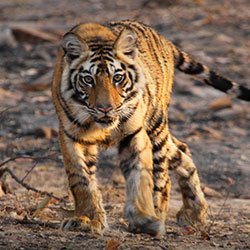
About Bandhavgarh National Park Bandhavgarh National Park, located in Umaria district of Madhya Pradesh, is one of the most popular national parks in India. It covers an area of 105 square kilometers and is known for its dense forest, hilly terrain, and rich biodiversity. The park is famous for its high population of Royal Bengal tigers and is a popular destination for wildlife enthusiasts and nature lovers. Location and Geographical Overview Bandhavgarh National Park is located in the Vindhya Hills of Madhya Pradesh, India. It is approximately 197 kilometers away from the city of Jabalpur and 35 kilometers from the town of Umaria. The park is spread across the tropical forests and grasslands of the region, with streams, rocky hills, and meadows making up its diverse landscape. Open and Closing Time The park remains open from October to June every year. The opening and closing timings of the park vary depending on the season. Generally, the park is open for visitors from 6:30 AM to 10:00 AM in the morning and from 3:00 PM to 6:00 PM in the evening. Entry Fee The entry fee for Bandhavgarh National Park varies for Indian and foreign nationals. For Indian visitors, the entry fee is INR 1500 per person, while for foreign nationals, the fee is INR 2500 per person. Additionally, there may be charges for vehicle entry and camera fees. Species-Flora/Fauna Availability Bandhavgarh National Park is home to a wide variety of flora and fauna. The park is known for its dense vegetation, including Sal trees, bamboo, and grasslands. The park is also home to numerous animal species, including the Royal Bengal tiger, Indian bison, leopard, sambar deer, and various species of birds and reptiles. Activities Performed Visitors to Bandhavgarh National Park can indulge in a range of activities, including jeep safaris, elephant safaris, bird watching, and nature walks. The park is ideal for wildlife photography and offers opportunities to witness the diverse wildlife in their natural habitat. Jeep Safari Charges The charges for jeep safari in Bandhavgarh National Park vary depending on the zone and the duration of the safari. On average, the cost of a jeep safari ranges from INR 4000 to INR 6000 per safari. It is advisable to book safari tickets in advance to avoid any last-minute hassles. Age Criterion and Entry Fee For entry into Bandhavgarh National Park, the age criteria and entry fees are as follows: Male Adults: 18-60 years, Entry Fee - INR 1500 Female Adults: 18-60 years, Entry Fee - INR 1500 Children (6-17 years): Entry Fee - INR 750 Senior Citizen Facilities Bandhavgarh National Park provides special facilities for senior citizens, including discounted entry fees, wheelchair access, and assistance from park staff. Senior citizens above the age of 60 can avail of these facilities by presenting valid identification documents. Best Time to Visit The best time to visit Bandhavgarh National Park is during the winter months from November to February when the weather is pleasant and the wildlife sightings are more frequent. However, the park remains open from October to June, allowing visitors to explore its beauty throughout the year. Nearby Places to Visit There are several places of interest near Bandhavgarh National Park that visitors can explore, including: Bandhavgarh Fort: An ancient fort located within the park premises Manpur Village: A nearby village known for its local culture and traditions Khajuraho Temples: A UNESCO World Heritage Site known for its intricate sculptures Vehicle Parking Facility Bandhavgarh National Park provides ample parking facilities for visitors who wish to bring their vehicles. There are designated parking areas near the park entrance where visitors can safely park their cars or bikes while they explore the park. Rules and Regulations Visitors to Bandhavgarh National Park are required to adhere to the following rules and regulations: Do not litter or disturb wildlife Do not feed or taunt animals Follow the instructions of park guides and officials Respect the natural environment and maintain silence during wildlife sightings How to Reach and Other Related Information Bandhavgarh National Park can be easily reached by road, rail, or air. The nearest airport is in Jabalpur, approximately 197 kilometers away from the park. Umaria is the nearest railway station, located 35 kilometers from the park. Visitors can also travel by road from nearby cities like Jabalpur, Katni, and Rewa to reach the park. For accommodation, there are several wildlife resorts and lodges near Bandhavgarh National Park that offer comfortable stay options for visitors. It is advisable to book accommodation in advance, especially during the peak tourist season. Overall, Bandhavgarh National Park is a must-visit destination for nature lovers and wildlife enthusiasts, offering a unique opportunity to witness the majestic Royal Bengal tigers in their natural habitat amidst the lush greenery of the park.
Explore More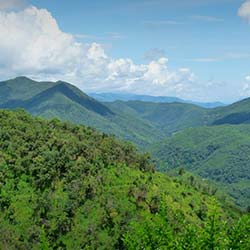
About Murlen National Park Murlen National Park is a renowned national park located in Aizawl district in the state of Mizoram, India. It was established in the year 1991 and covers an area of approximately 100 square kilometers. The park is known for its rich biodiversity, with a wide variety of flora and fauna species thriving within its boundaries. Location and Geographical Overview Murlen National Park is situated in the northeastern part of Mizoram, near the village of Khawbung. It is surrounded by lush green forests and beautiful landscapes, making it a popular destination for nature lovers and wildlife enthusiasts. Open and Closing Time The park is open to visitors from 7:00 AM to 4:00 PM on all days of the week, except for Mondays when it remains closed for maintenance. Entry Fee There is a nominal entry fee for visitors to enter Murlen National Park. The fee is Rs. 50 for Indian citizens and Rs. 200 for foreign nationals. Species-Flora/Fauna Availability Murlen National Park is home to a diverse range of flora and fauna species. The park is known for its rare and endangered wildlife, including species such as the hoolock gibbon, leaf monkey, and clouded leopard. The park is also famous for its diverse bird population, with over 150 species of birds recorded here. Activities Performed Visitors to Murlen National Park can indulge in a variety of activities such as trekking, bird watching, and nature walks. The park also offers jeep safaris for visitors to explore the wilderness and spot wildlife in their natural habitat. Jeep Safari Charges The charges for a jeep safari in Murlen National Park are Rs. 1000 per person. The safari usually lasts for about 2 hours and takes visitors through the dense forests and grasslands of the park, offering a unique wildlife viewing experience. Age Criterion and Entry Fee For male visitors, the entry fee is Rs. 50 for adults. For females and children under the age of 12, the entry fee is Rs. 30. Senior citizens above the age of 60 are eligible for a discounted entry fee of Rs. 20. Senior Citizen Facilities Murlen National Park offers special facilities for senior citizens to ensure their comfort and convenience during their visit. These facilities include rest areas, wheelchair access, and special guided tours tailored to their needs. Best Time to Visit The best time to visit Murlen National Park is during the winter months from November to February when the weather is pleasant and wildlife sightings are more frequent. The park is closed during the monsoon season from June to September due to heavy rainfall and difficult trekking conditions. Nearby Places to Visit There are several popular tourist attractions near Murlen National Park that visitors can explore during their trip. Some of the nearby places include Vantawang Falls, Phawngpui Peak, and Tamdil Lake, which offer stunning natural beauty and breathtaking views. Vehicle Parking Facility Murlen National Park provides ample parking facilities for visitors arriving by private vehicles. There are designated parking areas near the park entrance where visitors can safely park their cars and motorcycles. Rules and Regulations Visitors to Murlen National Park are required to adhere to certain rules and regulations to ensure the safety of wildlife and the preservation of the natural environment. Some of the regulations include no littering, no smoking, and no feeding of wildlife. It is also advised to stay on designated trails and follow the instructions of park guides. How to Reach and Other Related Information Murlen National Park can be easily reached by road from Aizawl, the capital city of Mizoram. The park is located approximately 245 kilometers away from Aizawl, and visitors can hire taxis or cabs to reach the park entrance. The nearest airport is Lengpui Airport, which is well connected to major cities in India. Overall, Murlen National Park is a must-visit destination for nature lovers and wildlife enthusiasts looking to explore the untouched beauty of Mizoram's wilderness. With its rich biodiversity, stunning landscapes, and thrilling wildlife sightings, the park offers a unique and unforgettable experience for visitors of all ages.
Explore More
About Camel Breeding Farms The Camel Breeding Farms in Bikaner are one of the top tourist attractions in the region. Established to preserve and breed the majestic camel for various purposes, the farms offer a unique experience for visitors to learn about this magnificent animal. Location and Geographical Overview The Camel Breeding Farms are located in Bikaner, a city in the state of Rajasthan, India. Situated in the arid Thar Desert, the farms cover a vast area of land and provide a natural habitat for camels to thrive. Open and Closing Time The Camel Breeding Farms are open to visitors from 9:00 AM to 5:00 PM every day of the week. Entry Fee There is no entry fee to visit the Camel Breeding Farms. Species-Flora/Fauna Availability While the main attraction at the Camel Breeding Farms is the camels, visitors can also spot various species of flora and fauna that thrive in the desert environment. This includes desert plants, birds, and small mammals. Activities Performed Visitors to the Camel Breeding Farms can enjoy a range of activities, such as camel rides, feeding the camels, and learning about camel breeding practices. There are also cultural performances and demonstrations that showcase the importance of camels in Rajasthani culture. Jeep Safari Charges For those looking for a more adventurous experience, jeep safaris are available at an additional cost. The charges for jeep safaris vary depending on the duration and route chosen. Age Criterion and Entry Fee There is no specific age criterion for visitors to the Camel Breeding Farms. The entry fee is free for all visitors, regardless of age or gender. Senior Citizen Facilities The Camel Breeding Farms are wheelchair accessible, and special facilities are available for senior citizens to ensure a comfortable visit. Best Time to Visit The best time to visit the Camel Breeding Farms is during the winter months (October to March) when the weather is pleasant and conducive to outdoor activities. Nearby Places to Visit While in Bikaner, visitors can explore other attractions such as the Junagarh Fort, Karni Mata Temple (also known as the Rat Temple), and the Laxmi Niwas Palace. Vehicle Parking Facility There is ample parking space available for visitors at the Camel Breeding Farms. Visitors can park their cars or hired vehicles safely while exploring the farms. Rules and Regulations Visitors are required to follow certain rules and regulations while visiting the Camel Breeding Farms. These include maintaining a safe distance from the animals, refraining from feeding them anything other than designated food, and disposing of litter responsibly. How to Reach and Other Related Information The Camel Breeding Farms in Bikaner are easily accessible by road, rail, and air. The nearest airport is in Jodhpur, approximately 250 km away, while the Bikaner railway station is well-connected to major cities in India. Visitors can also hire taxis or use public transport to reach the farms from the city center. Overall, a visit to the Camel Breeding Farms in Bikaner is a unique and educational experience that offers insight into the world of camels and their significance in the desert ecosystem.
Explore More5N Ujjain - Maheshwar - Mandu - Indore Tour
6 Days/ 5 Night
Dhar - Indore - Ujjain - Omkareshwara - Khargone
Nainital - Jim Corbett Tour Package From Delhi
5 Days/ 4 Night
Nainital - Corbett
Summer Goa Escape 2N - 3D Tour
3 Days/ 2 Night
Goa City - North Goa - South Goa
10 Night 11 Days Char Dham Yatra 2026
11 Days/ 10 Night
Kedarnath - Badrinath - Yamunotri - Gangotri

About Malsi Deer Park Malsi Deer Park, located in Dehradun, Uttarakhand, is a popular tourist destination known for its natural beauty and wildlife. The park is home to various species of flora and fauna, making it a perfect spot for nature lovers and wildlife enthusiasts. Location and Geographical Overview Malsi Deer Park is situated at the foothills of the Shivalik range, approximately 10 kilometers from the city center of Dehradun. The park is spread across an area of 25 hectares and is surrounded by lush green forests, providing a serene and picturesque setting for visitors. Opening and Closing Time The park is open to visitors from 8:00 AM to 6:00 PM every day of the week. Entry Fee The entry fee for Malsi Deer Park is Rs. 20 per person for adults and Rs. 10 per person for children. Species-Flora/Fauna Availability Malsi Deer Park is home to various species of flora and fauna, including deer, peacocks, rabbits, and various bird species. The park also houses a variety of trees and plants, adding to its natural charm. Activities Performed Visitors to Malsi Deer Park can enjoy activities like nature walks, bird watching, picnicking, and photography. The park also offers the opportunity to observe and feed the deer, making it a fun and educational experience for visitors of all ages. Jeep Safari Charges Malsi Deer Park offers jeep safari rides for visitors to explore the park and its wildlife. The charges for a jeep safari ride start from Rs. 500 per person. Age Criterion and Entry Fee For males and females above the age of 12, the entry fee is Rs. 20 per person. For children between the ages of 5 to 12, the entry fee is Rs. 10 per person. Children under the age of 5 can enter the park for free. Senior Citizen Facilities Malsi Deer Park provides special facilities for senior citizens, including benches and resting areas throughout the park for their comfort and convenience. Best Time to Visit The best time to visit Malsi Deer Park is during the months of October to March when the weather is pleasant and conducive for outdoor activities. Visitors can also witness the beauty of the park during the monsoon season, when the surroundings are lush and green. Nearby Places to Visit Some nearby places to visit while in Dehradun include Robber's Cave, Tapkeshwar Temple, Mindrolling Monastery, and Rajaji National Park, all of which offer unique attractions and experiences for visitors. Vehicle Parking Facility Malsi Deer Park provides a designated parking area for visitors to park their vehicles securely. The parking facility is safe and well-maintained, ensuring a hassle-free experience for visitors. Rules and Regulations Visitors are requested to follow the rules and regulations of Malsi Deer Park, including maintaining cleanliness, not feeding the animals, and refraining from littering. It is also advised to respect the natural habitat and wildlife of the park during your visit. How to Reach and Other Related Information Malsi Deer Park is easily accessible by both public and private transportation. Visitors can take a taxi or hire a car to reach the park from Dehradun city center. The nearest airport is Jolly Grant Airport, located approximately 35 kilometers away from the park. Additionally, there are several hotels and accommodations available near Malsi Deer Park for visitors looking to stay overnight.
Explore More
General Information Date of Establishment- 1959. Area covered- 214acres. Location- The National Zoological Park is situated near to the Purana Qila (Old Fort) in Delhi. About the National Zoological Park! The National Zoological Park of Delhi is situated near the Purana Qila and is reckoned as one of the best zoos in Asia. The park was established in the year 1959. The park covers a vast tract of land i.e. around 214acres of land. The zoo is the ideal picnic spot for school children. The park has a Kos Minar, which was erected in the 17th century by Jehangir, the son of great emperor Akbar.The park is well designed by Carl Hagenbeck of West Germany and Major Weinman of Sri Lanka. The pathway has various arrow marks printed on them. These arrow marks helps the tourists in the better viewing of the zoo and also saves their time. One can also find a large number of open-roofed mobile vans, which takes a group of people through the whole zoo.During winters, huge crowds of people come to the place and enjoy their time lying on the lush green grass. The administrative building is located within the park itself. The park also has a library, where one can get all the required information regarding the wildlife. One can also find a cafeteria located outside the zoo. Flora- The zoo is covered with a rich natural vegetation cover that comprises of various species of plants & trees. There are around 200 species of trees like hanging Alamtas hedges, Lahura trees, bistendu, bamboo etc. Fauna- There are more than 2000 species available in the Delhi zoological park. Some of animals seen here include African Wild Buffalo, Zebras, Gir Lion, Spider monkey, Macaque, Hyenas, Banteng, Peafowl, Axis deer, Emu, Hog Dear, Fallow deer, Hippopotamus, Jaguar, White tiger, leopard, crocodiles, python, spotted deer, barking deer and many more. How to reach! Rail- Delhi is the headquarters of the Northern Indian railway and thus is well connected to all parts of India. Air-Delhi has both domestic as well as international airport. Road- Delhi is well connected by road to major cities in India.
Explore More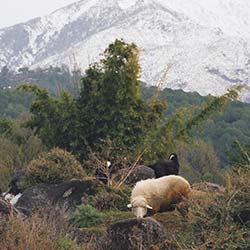
About Dhauladhar National Park Dhauladhar National Park is a wildlife sanctuary located in Dharamshala, Himachal Pradesh, India. It covers an area of approximately 1200 square kilometers and is situated in the Dhauladhar Range of the Himalayas. The park is known for its diverse flora and fauna, offering visitors a chance to witness the natural beauty of the region. Location and Geographical Overview The Dhauladhar National Park is located in the Kangra district of Himachal Pradesh, near the town of Dharamshala. The park is nestled in the Dhauladhar Range, with lush forests, meadows, and snow-capped peaks surrounding the area. The park is home to a variety of wildlife species, making it a popular destination for nature enthusiasts and wildlife photographers. Open and Closing Time The Dhauladhar National Park is open to visitors from 9:00 AM to 5:00 PM every day. It is recommended to plan your visit during these hours to make the most of your time exploring the beauty of the park. Entry Fee The entry fee for Dhauladhar National Park is INR 50 for adults and INR 25 for children. Visitors are required to pay the entry fee at the park entrance before entering. Species-Flora/Fauna Availability The park is home to a wide variety of flora and fauna. Some of the commonly found species in the Dhauladhar National Park include Himalayan Black Bear, Ghoral, Leopard, Himalayan Thar, and many more. The park also boasts a diverse range of plant species, including rhododendrons, oak trees, and various medicinal herbs. Activities Performed Visitors to Dhauladhar National Park can engage in a range of activities, including nature walks, bird watching, wildlife spotting, and photography. The park also offers jeep safaris for those who want to explore the area in a more guided manner. Jeep Safari Charges The charges for a jeep safari in Dhauladhar National Park vary depending on the duration and route chosen. On average, the cost of a jeep safari starts from INR 1500 per person. It is recommended to book your safari in advance to avoid any last-minute hassles. Age Criterion for Male, Female, Children, and Their Entry Fee There is no specific age criterion for visitors to Dhauladhar National Park. However, the entry fee is INR 50 for adults and INR 25 for children under the age of 12. Female visitors are charged the same entry fee as males. Senior Citizen Facilities Dhauladhar National Park offers facilities for senior citizens to ensure their comfort and safety during their visit. There are designated resting areas, benches, and easy walking trails for elderly visitors to enjoy the beauty of the park at their own pace. Best Time to Visit The best time to visit Dhauladhar National Park is during the summer and early autumn months, from April to October. The weather during this time is pleasant, and the park is teeming with wildlife and blooming flowers, making it a perfect time for nature lovers to explore the area. Nearby Places to Visit There are several tourist attractions near Dhauladhar National Park that visitors can explore during their trip to Dharamshala. Some of the popular nearby places include Bhagsunath Temple, Triund Hill, Dal Lake, and Tsuglagkhang Complex. These places offer a glimpse into the cultural and natural beauty of the region. Vehicle Parking Facility Dhauladhar National Park provides ample parking space for visitors who wish to bring their vehicles. There are designated parking lots near the park entrance where visitors can safely park their cars and bikes during their visit. Rules and Regulations Visitors to Dhauladhar National Park are required to follow certain rules and regulations to ensure the safety of the wildlife and the preservation of the park. Some of the rules include not littering, not feeding the animals, maintaining silence in designated areas, and following the instructions of park staff and guides. How to Reach and Other Related Information Dhauladhar National Park is easily accessible by road from Dharamshala and nearby cities in Himachal Pradesh. The nearest airport is Gaggal Airport, located approximately 20 kilometers away from the park. Visitors can also reach the park by bus from Dharamshala bus stand. It is advisable to wear comfortable walking shoes and carry water and snacks during your visit to the park. Overall, Dhauladhar National Park offers a unique opportunity to experience the beauty of the Himalayan region and observe a wide variety of wildlife in their natural habitat. Whether you are a nature lover, adventure enthusiast, or wildlife photographer, a visit to this park is sure to leave you mesmerized by the charm and tranquility of the wilderness.
Explore More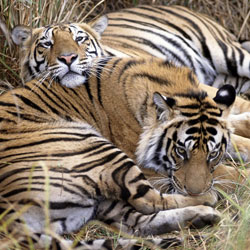
About Keibul Lamjao National Park Keibul Lamjao National Park, located near the city of Imphal in Manipur, is the only floating national park in the world. The park covers an area of approximately 40 square kilometers and is known for being the last natural refuge of the endangered Manipur brow-antlered deer, also known as the Sangai. Location and Geographical Overview The Keibul Lamjao National Park is situated in the Bishnupur district of Manipur, around 53 kilometers from the capital city of Imphal. It is located on the Loktak Lake, which is the largest freshwater lake in northeastern India. The park is characterized by its unique floating vegetation, known as phumdis, which are islands of organic matter and soil that float on the surface of the lake. Open and Closing Time The Keibul Lamjao National Park is open to visitors from 7:00 AM to 4:00 PM every day of the week. It is recommended to visit the park in the early morning or late afternoon to maximize wildlife sightings. Entry Fee There is an entry fee of INR 20 for Indian nationals and INR 100 for foreign tourists to enter the Keibul Lamjao National Park. This fee is used for the conservation and maintenance of the park. Species-Flora/Fauna Availability The Keibul Lamjao National Park is home to a variety of flora and fauna, including the rare Sangai deer, as well as other wildlife such as sambar deer, hog deer, otters, and various species of birds. The park is also rich in aquatic vegetation and serves as an important habitat for migratory birds. Activities Performed Visitors to the Keibul Lamjao National Park can engage in activities such as bird watching, nature walks, and boat rides on the Loktak Lake. The park is also popular for wildlife photography and jeep safaris. Jeep Safari Charges Jeep safaris are available for visitors to explore the Keibul Lamjao National Park. The charges for a jeep safari vary depending on the duration and route chosen, with prices starting at INR 500 per person. Age Criterion for Male, Female, Children and their Entry Fee Children below the age of 5 years are allowed to enter the Keibul Lamjao National Park free of charge. The entry fee for children between the ages of 5-12 years is INR 10, while for adults (both male and female) the fee is INR 20. Senior Citizen Facilities Senior citizens above the age of 65 are eligible for a discounted entry fee of INR 10 when visiting the Keibul Lamjao National Park. They can also avail of special facilities such as seating areas and assistance from park staff if required. Best Time to Visit The best time to visit the Keibul Lamjao National Park is during the winter season, from November to March, when the weather is pleasant and wildlife sightings are more frequent. The park is also open during the monsoon season, from June to September, but it is recommended to check weather conditions before planning a visit. Nearby Places to Visit While in Imphal, visitors can explore other tourist attractions such as Loktak Lake, Kangla Fort, Shri Govindajee Temple, and the War Cemetery. The city is also known for its vibrant markets and cultural performances, offering a rich experience of Manipuri heritage. Vehicle Parking Facility The Keibul Lamjao National Park has designated parking areas for visitors who arrive by private vehicles. The parking facility is secure and well-maintained, with attendants available to assist with parking and guide visitors to the park entrance. Rules and Regulations Visitors to the Keibul Lamjao National Park are required to follow certain rules and regulations to ensure the safety of wildlife and maintain the natural environment. Some of these rules include not littering, not feeding the animals, and not disturbing the habitat in any way. It is also advisable to stay on designated paths and follow the instructions of park staff. How to Reach and Other Related Information The Keibul Lamjao National Park can be reached from Imphal by road, with buses and taxis available for transportation. The nearest airport is Imphal Airport, which is well-connected to major cities in India. Visitors can also hire a guide to explore the park and learn more about the local flora and fauna. Accommodation options are available in Imphal, ranging from budget hotels to luxury resorts, making it convenient for tourists to plan a visit to the Keibul Lamjao National Park.
Explore More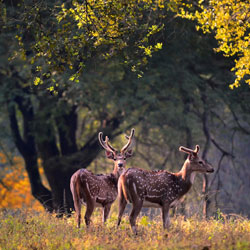
About Kanha Kisli National Park Kanha Kisli National Park is a renowned wildlife sanctuary located in Jabalpur, Madhya Pradesh, India. The park is famous for being the inspiration behind Rudyard Kipling's classic novel, "The Jungle Book". Kanha Kisli National Park is spread over an area of 940 square kilometers and is home to a diverse range of flora and fauna. Location and Geographical Overview The park is situated in the Maikal Hills of the Satpura Range and is divided into two sanctuaries - the Kanha National Park and the Kisli National Park. The park is characterized by lush forests, rolling meadows, and the Banjaar River running through it, providing a picturesque setting for wildlife enthusiasts. Open and Closing Time The park is open to visitors from October to June every year. The timings for entry and exit vary depending on the season, with the park generally open from 6:30 am to 10:30 am and from 3:00 pm to 6:00 pm. Entry Fee The entry fee for Kanha Kisli National Park varies for Indian and foreign tourists. Indian nationals are charged a nominal fee while foreign tourists have to pay a higher fee. Additionally, there are separate charges for cameras and vehicles entering the park. Species-Flora/Fauna Availability Kanha Kisli National Park is home to a rich variety of flora and fauna. The park is famous for its population of Bengal tigers, as well as species like leopards, wild dogs, Indian bison, and various species of deer and birds. Activities Performed Visitors to the park can engage in a variety of activities such as jeep safaris, nature walks, bird watching, and guided tours. The park also offers opportunities for photography and nature enthusiasts to explore the beauty of the surrounding wilderness. Jeep Safari Charges The park offers jeep safaris for visitors to explore the wildlife sanctuary. The charges for jeep safaris vary based on the duration of the safari and the number of people in the vehicle. Age Criterion for Male, Female, Children and Entry Fee There is no specific age criterion for entry into Kanha Kisli National Park. However, there are separate entry fees for male, female, and children visitors. Children below a certain age may be eligible for discounted entry fees. Senior Citizen Facilities The park provides special facilities for senior citizens, including wheelchair access and designated seating areas. Senior citizens may also be eligible for discounted entry fees to the park. Best Time to Visit The best time to visit Kanha Kisli National Park is during the winter months from November to February when the weather is pleasant and wildlife sightings are more frequent. The park is closed during the monsoon season from July to September. Nearby Places to Visit There are several other attractions near Kanha Kisli National Park that visitors can explore, including the Bamni Dadar viewpoint, Kanha Museum, and the famous Mandla Fort. These places offer a glimpse into the rich history and culture of the region. Vehicle Parking Facility The park provides ample parking facilities for visitors bringing their vehicles. There are designated parking areas near the entrance where visitors can safely park their cars and proceed to explore the park. Rules and Regulations Visitors to Kanha Kisli National Park are required to follow certain rules and regulations to ensure the safety of the wildlife and the environment. This includes not disturbing the animals, not littering, and following the instructions of the park guides and officials. How to Reach and Other Related Information Kanha Kisli National Park is easily accessible by road from Jabalpur, which is the nearest major city. Visitors can hire taxis or take buses to reach the park. The nearest airport to the park is in Jabalpur, which is well-connected to major cities in India. Additionally, there are accommodation options near the park for visitors looking to spend the night in the wilderness. Overall, Kanha Kisli National Park offers a unique opportunity to experience the beauty of nature and witness the majestic wildlife of India in their natural habitat. Whether you are a nature lover, wildlife enthusiast, or adventure seeker, a visit to this national park is sure to be a memorable experience.
Explore More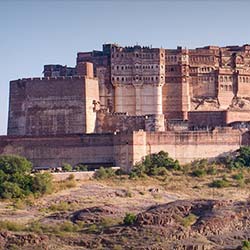
About Rao Jodha Desert Rock Park The Rao Jodha Desert Rock Park is a unique ecological park located in Jodhpur, Rajasthan. Spread over 70 hectares, the park showcases the natural desert ecosystem of the region and is home to a variety of flora and fauna. Location and Geographical Overview The park is situated at the foot of Mehrangarh Fort in Jodhpur, overlooking the majestic blue city. It is located near the historic city wall and offers stunning views of the surrounding landscape. Open and Closing Time The park is open from 7:00 AM to 6:30 PM every day, including weekends and public holidays. Entry Fee The entry fee for Indian nationals is INR 100 for adults and INR 50 for children. For foreign tourists, the entry fee is INR 200 for adults and INR 100 for children. Species-Flora/Fauna Availability The park is home to a diverse range of plant species including desert cacti, shrubs, and trees. It is also a habitat for various bird species, reptiles, and small animals. Activities Performed Visitors can enjoy nature walks, birdwatching, and photography in the park. There are also organized guided tours available for those interested in learning more about the flora and fauna of the desert ecosystem. Jeep Safari Charges Jeep safari tours are available for visitors who want to explore the park in a more adventurous way. The charges for a jeep safari start at INR 500 per person. Age Criterion and Entry Fee There is no specific age criterion for entry into the park. However, the entry fee is applicable based on the age of the visitor as mentioned above. Senior Citizen Facilities The park offers special facilities for senior citizens including designated seating areas and easy access to walking paths. Wheelchairs are also available for those with mobility issues. Best Time to Visit The best time to visit the Rao Jodha Desert Rock Park is during the winter months from October to March when the weather is pleasant and the flora is in full bloom. Nearby Places to Visit Some of the nearby attractions include Mehrangarh Fort, Jaswant Thada, Umaid Bhawan Palace, and the bustling markets of Jodhpur city. Vehicle Parking Facility There is a designated parking area near the entrance of the park where visitors can park their vehicles. The parking facility is well-maintained and secure. Rules and Regulations Visitors are required to follow certain rules and regulations while visiting the park, such as maintaining cleanliness, not plucking or damaging any plants, and refraining from feeding the animals. How to Reach and Other Related Information The Rao Jodha Desert Rock Park is easily accessible by road from the main city of Jodhpur. Visitors can hire a taxi or auto-rickshaw to reach the park. The nearest railway station is Jodhpur Junction, which is about 5 km away from the park. The nearest airport is Jodhpur Airport, located approximately 7 km from the park. Overall, the Rao Jodha Desert Rock Park offers a peaceful retreat amidst the desert landscape, allowing visitors to experience the beauty of nature in its raw and untouched form.
Explore More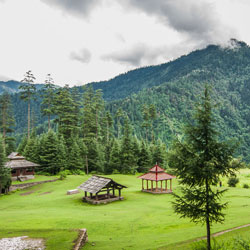
About Great Himalayan National Park The Great Himalayan National Park, located in Kullu district of Himachal Pradesh, is a UNESCO World Heritage Site known for its diverse range of flora and fauna. Established in 1984, the park covers an area of 754.4 square kilometers and is home to numerous species of plants and animals. Location and Geographical Overview The Great Himalayan National Park is located in the western part of the Himalayan range in Himachal Pradesh, India. It is situated at an altitude ranging from 1500 to 6000 meters above sea level and is surrounded by snow-capped peaks, alpine meadows, and dense forests. Open and Closing Time The park is open to visitors from 9:00 am to 5:00 pm every day of the week, including weekends and public holidays. It is closed during the monsoon season, typically from July to September, due to heavy rainfall and the risk of landslides. Entry Fee There is an entry fee for visiting the Great Himalayan National Park, which varies for Indian and foreign tourists. The entry fee for Indian adults is INR 50, while for foreign nationals, it is INR 200. Children below the age of 12 years can enter for free. Species-Flora/Fauna Availability The Great Himalayan National Park is known for its rich biodiversity, with over 375 species of flora and fauna found within its boundaries. Some of the notable species include the Western Tragopan, Himalayan Tahr, Snow Leopard, and Blue Sheep. Activities Performed Visitors to the park can engage in a variety of activities such as trekking, bird watching, nature walks, and camping. The park also offers guided tours and educational programs for those interested in learning more about its wildlife and conservation efforts. Jeep Safari Charges Jeep safaris are available for visitors who wish to explore the park's rugged terrain and spot wildlife from the comfort of a vehicle. The charges for a jeep safari vary depending on the duration and route chosen, with prices starting from INR 1500 per person. Age Criterion and Entry Fee Children below the age of 12 years can enter the Great Himalayan National Park for free. The entry fee for male and female adults is INR 50 for Indian nationals and INR 200 for foreign nationals. Senior Citizen Facilities Senior citizens above the age of 60 years can avail of a discounted entry fee at the Great Himalayan National Park. They are required to show valid proof of age, such as an ID card or passport, to avail of the concession. Best Time to Visit The best time to visit the Great Himalayan National Park is during the summer and autumn months, from April to June and September to November. The weather is pleasant during these months, making it ideal for trekking and wildlife spotting. Nearby Places to Visit There are several tourist attractions near the Great Himalayan National Park that visitors can explore, including the picturesque town of Manali, the Rohtang Pass, and the Solang Valley. These places offer stunning views of the Himalayan landscape and opportunities for adventure sports. Vehicle Parking Facility There is a designated parking area near the entrance of the Great Himalayan National Park where visitors can park their vehicles. The parking facility is secure and well-maintained, with attendants available to assist visitors with parking their cars and bikes. Rules and Regulations Visitors to the Great Himalayan National Park are required to follow certain rules and regulations to ensure the safety of themselves and the park's wildlife. Some of the key rules include not littering, not feeding the animals, and staying on designated trails during treks. How to Reach and Other Related Information The Great Himalayan National Park is easily accessible by road from major cities such as Delhi and Chandigarh. The nearest airport is in Bhuntar, which is approximately 50 kilometers away, while the nearest railway station is in Joginder Nagar, around 150 kilometers away. Visitors can also hire taxis or take buses to reach the park from nearby towns and cities.
Explore More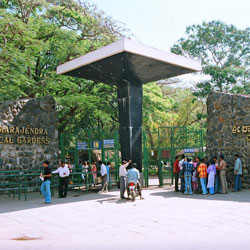
About Mysore Zoo Mysore Zoo, also known as Sri Chamarajendra Zoological Gardens, is one of the oldest and most popular zoos in India. Established in 1892, it is located in the city of Mysore in the state of Karnataka. The zoo is spread over an area of 157 acres and is home to a wide variety of species, making it a must-visit destination for animal lovers and nature enthusiasts. Location and Geographical Overview Mysore Zoo is situated near the Mysore Palace in the heart of the city. The zoo is easily accessible by road and is well-connected to major cities like Bangalore and Mangalore. The lush green surroundings and well-maintained pathways make it a pleasant place to spend a day amidst nature. Open and Closing Time The Mysore Zoo is open to visitors from 8:30 AM to 5:30 PM every day of the week, including weekends and public holidays. It is recommended to arrive early to make the most of your visit and avoid crowds. Entry Fee The entry fee for Mysore Zoo is Rs. 60 for adults, Rs. 30 for children between 5-12 years, and free for children below 5 years. Foreign tourists are charged Rs. 300 per person. The entry fee is inclusive of access to all exhibits and attractions within the zoo. Species-Flora/Fauna Availability Mysore Zoo is home to a diverse range of wildlife species including lions, tigers, elephants, giraffes, bears, and various species of birds, reptiles, and primates. The zoo also has a botanical garden with a wide variety of plant species, making it a perfect blend of flora and fauna. Activities Performed Visitors to Mysore Zoo can engage in various activities such as animal feeding sessions, bird watching, and educational programs conducted by the zoo staff. There are also interactive displays and exhibitions aimed at educating visitors about wildlife conservation and environmental preservation. Jeep Safari Charges The zoo offers a jeep safari experience for visitors to get a closer look at the animals in their natural habitat. The charges for the jeep safari vary depending on the duration and are subject to availability. It is recommended to inquire at the zoo entrance for more details. Age Criterion and Entry Fee The entry fee for Mysore Zoo is Rs. 60 for adults, Rs. 30 for children between 5-12 years, and free for children below 5 years. Senior citizens above the age of 60 are also eligible for a discounted entry fee of Rs. 30. Valid ID proof may be required for age verification. Senior Citizen Facilities Mysore Zoo offers special facilities for senior citizens including rest areas, seating arrangements, and wheelchair access to ensure a comfortable visit. The zoo staff is also available to assist elderly visitors with any special requirements they may have. Best Time to Visit The best time to visit Mysore Zoo is during the early hours of the day when the animals are most active. It is also advisable to visit during the cooler months of the year, between October to March, to avoid the heat and humidity of the summer season. Nearby Places to Visit While in Mysore, visitors can explore other attractions such as Mysore Palace, Brindavan Gardens, Chamundi Hills, and St. Philomena's Church. These places offer a glimpse into the rich culture and heritage of the city and are worth a visit during your stay. Vehicle Parking Facility Mysore Zoo provides ample parking space for private vehicles and two-wheelers near the entrance gate. The parking facility is secure and well-maintained, allowing visitors to explore the zoo without worrying about their vehicles. Rules and Regulations Visitors are required to follow certain rules and regulations while visiting Mysore Zoo to ensure the safety of the animals and other visitors. Some of the guidelines include not feeding the animals, not littering, and maintaining a safe distance from the enclosures. Photography may be restricted in certain areas for the welfare of the animals. How to Reach and Other Related Information Mysore Zoo is easily accessible by road from major cities like Bangalore, which is around 150 km away. The nearest railway station is Mysore Junction, located just 2 km from the zoo. Local buses and taxis are available for transportation within the city. For more information on visiting Mysore Zoo, visitors can visit the official website or contact the zoo authorities directly.
Explore More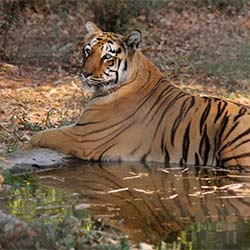
About Maharajbagh Zoo Maharajbagh Zoo, also known as the Dr. Babasaheb Ambedkar Zoological Park, is a prominent zoo located in Nagpur, Maharashtra. It covers an area of approximately 22.4 acres and is home to a diverse range of flora and fauna species. Location and Geographical Overview The Maharajbagh Zoo is situated in the heart of Nagpur city, near the Ambazari Lake. Its central location makes it easily accessible to both locals and tourists. The zoo is surrounded by lush greenery and offers a tranquil environment for visitors to relax and enjoy the natural beauty of the surroundings. Opening and Closing Time The Maharajbagh Zoo is open to visitors from 8:30 am to 5:30 pm every day of the week, including weekends and holidays. It is recommended to arrive early to make the most of your visit and explore all the exhibits and attractions at the zoo. Entry Fee The entry fee for Maharajbagh Zoo is nominal, making it an affordable destination for families and individuals. The ticket prices may vary for different categories such as adults, children, and senior citizens. Group discounts may also be available for large parties or school trips. Species-Flora/Fauna Availability Maharajbagh Zoo is home to a wide variety of flora and fauna species, including exotic animals, birds, and plants. Visitors can observe and learn about different species in their natural habitats through carefully designed enclosures and exhibits. Activities Performed Visitors to Maharajbagh Zoo can participate in various activities such as guided tours, animal feeding sessions, and educational programs. The zoo also hosts special events and exhibitions to raise awareness about wildlife conservation and environmental protection. Jeep Safari Charges For those looking for a unique and exciting experience, Maharajbagh Zoo offers jeep safari rides through designated trails within the zoo premises. The charges for a jeep safari may vary depending on the duration of the ride and the number of participants. Age Criterion and Entry Fee There may be specific age criteria for entry into Maharajbagh Zoo, with different ticket prices for males, females, and children. It is advisable to check the official website or contact the zoo authorities for detailed information on entry fees and age restrictions. Senior Citizen Facilities Maharajbagh Zoo provides special facilities and discounts for senior citizens to ensure their comfort and enjoyment during their visit. These may include wheelchair accessibility, seating areas, and discounted ticket prices for elderly visitors. Best Time to Visit The best time to visit Maharajbagh Zoo is during the cooler months of the year, such as winter or early spring. This is when the weather is most pleasant, and the animals are more active, making it an ideal time for sightseeing and exploring the zoo. Nearby Places to Visit Located in the heart of Nagpur, Maharajbagh Zoo is surrounded by several other attractions and landmarks that visitors can explore. These may include parks, museums, temples, shopping areas, and restaurants, providing a well-rounded experience for tourists. Vehicle Parking Facility Maharajbagh Zoo offers ample parking space for visitors who arrive by car or other vehicles. The parking facility is well-maintained and secure, providing a convenient option for those traveling by their own transport. Rules and Regulations Visitors are expected to adhere to the rules and regulations set by Maharajbagh Zoo to ensure the safety of both animals and guests. These may include guidelines on photography, littering, noise levels, and interaction with animals, among others. How to Reach and Other Related Information Maharajbagh Zoo is easily accessible by various modes of transportation, including public buses, taxis, and auto-rickshaws. The nearest railway station and airport are located a short distance away, making it convenient for out-of-town visitors to reach the zoo. For more information on directions, entry fees, and upcoming events, visitors can visit the official website of Maharajbagh Zoo or contact the zoo authorities directly.
Explore More
About Nainital Zoo Nainital Zoo, officially known as Pt. G.B. Pant High Altitude Zoo, is located in Nainital, Uttarakhand, India. It is one of the must-visit attractions for nature lovers and wildlife enthusiasts in the region. Established in 1984, the zoo is spread over 4.6 hectares at an altitude of 2,100 meters above sea level, making it the highest zoo in India. The zoo is home to a variety of flora and fauna native to the region, making it a paradise for animal lovers. Location and Geographical Overview The Nainital Zoo is located around 1.5 kilometers from the famous Mall Road in Nainital. Situated amidst the beautiful surroundings of the Sher Ka Danda hill, the zoo offers breathtaking views of the Nainital town and the surrounding mountains. The zoo is easily accessible by road and can be reached by hiring a taxi or taking a short walk from the Mall Road. Open and Closing Time The Nainital Zoo is open to visitors from 9:30 AM to 4:30 PM every day, except on Mondays and national holidays. Entry Fee The entry fee for adults is INR 50, while for children (between 5-12 years), it is INR 20. Foreign nationals need to pay INR 100 for entry into the zoo. Species-Flora/Fauna Availability The zoo is home to a variety of flora and fauna that are native to the region. Some of the animals you can spot at the zoo include Himalayan Black Bear, Tibetan Wolves, Snow Leopard, Sambhar Deer, and various species of birds and reptiles. The zoo also has a wide variety of plant species that are indigenous to the region. Activities Performed Visitors to the Nainital Zoo can enjoy various activities such as guided tours, animal feeding sessions, and educational programs on wildlife conservation. The zoo also organizes special events and workshops for visitors to learn more about the animals and their habitats. Jeep Safari Charges The Nainital Zoo offers jeep safari rides for visitors to explore the zoo and its surroundings. The charges for the jeep safari vary depending on the duration of the ride and the number of people participating. Age Criterion for Male, Female, Children, and Their Entry Fee For males and females, the entry fee is the same, i.e., INR 50. Children between 5-12 years are charged INR 20 for entry into the zoo. Children below 5 years of age can enter free of cost. Senior Citizen Facilities The Nainital Zoo offers special facilities for senior citizens, including wheelchair assistance and designated seating areas for resting. Senior citizens are also eligible for a discount on the entry fee to the zoo. Best Time to Visit The best time to visit the Nainital Zoo is during the summer months from March to June when the weather is pleasant, and the animals are more active. The zoo is also a great place to visit during the winter months from November to February when you can witness the animals in their winter habitats. Nearby Places to Visit Some of the nearby places to visit while in Nainital include Naina Devi Temple, Naini Lake, Tiffin Top, Snow View Point, and Eco Cave Gardens. These attractions offer a glimpse of the natural beauty and culture of Nainital. Vehicle Parking Facility The Nainital Zoo provides ample parking space for visitors who wish to bring their vehicles. The parking facility is secure and well-maintained, ensuring the safety of the vehicles while visitors explore the zoo. Rules and Regulations Visitors to the Nainital Zoo are required to follow certain rules and regulations to ensure the safety of the animals and the environment. Some of the rules include not feeding the animals, not littering the premises, and maintaining silence while observing the animals. How to Reach and Other Related Information The Nainital Zoo is easily accessible by road from major cities like Delhi and Dehradun. Visitors can hire a taxi or take a bus to reach Nainital and then proceed to the zoo. The nearest railway station is Kathgodam, which is around 34 kilometers away from Nainital. The nearest airport is Pantnagar Airport, which is approximately 70 kilometers away from Nainital. Overall, a visit to the Nainital Zoo is a memorable experience for nature lovers and wildlife enthusiasts. The zoo provides a unique opportunity to observe and learn about the rich biodiversity of the region while enjoying the scenic beauty of Nainital. Plan your trip to the Nainital Zoo and immerse yourself in the wonders of nature.
Explore More
About Satpura National Park Satpura National Park is located in the Hoshangabad district of Madhya Pradesh, India. It covers an area of 524 square kilometers and is part of the larger Satpura Range. The national park is known for its rich biodiversity, rugged terrain, and beautiful landscapes. Location and Geographical Overview Satpura National Park is situated in the central part of India, approximately 130 kilometers from the city of Bhopal. The park is surrounded by the Satpura Range and is characterized by dense forests, hilly terrain, and numerous water bodies. Open and Closing Time The park is open to visitors from sunrise to sunset every day of the week. It is closed during the monsoon season, typically from July to September, due to heavy rainfall and difficult travel conditions. Entry Fee For Indian nationals, the entry fee to Satpura National Park is Rs. 200 per person. Foreign tourists are charged Rs. 1,000 per person. Additionally, there is a vehicle entry fee of Rs. 300 for Indian nationals and Rs. 1,500 for foreign tourists. Species-Flora/Fauna Availability Satpura National Park is home to a wide variety of plant and animal species. The park boasts a rich diversity of flora, including teak, bamboo, and sal trees. It is also known for its wildlife, with species such as tigers, leopards, sambar deer, and Indian bison found in the area. Activities Performed Visitors to Satpura National Park can enjoy a range of activities, including jeep safaris, nature walks, bird watching, and boat rides on the Denwa River. The park also offers camping and trekking opportunities for those looking to explore the wilderness. Jeep Safari Charges Jeep safaris are a popular way to explore Satpura National Park. The cost of a jeep safari varies depending on the duration and route chosen. On average, a safari can cost between Rs. 2,000 to Rs. 4,000 per person. Age Criterion and Entry Fee Children under the age of 5 are allowed entry to the park free of charge. For children between the ages of 5 to 12, the entry fee is Rs. 100. Male and female visitors aged 13 and above are charged the standard entry fee of Rs. 200 for Indian nationals and Rs. 1,000 for foreign tourists. Senior Citizen Facilities Senior citizens above the age of 60 are eligible for a discounted entry fee of Rs. 100. The park also provides special facilities for senior citizens, such as wheelchair accessibility and designated rest areas. Best Time to Visit The best time to visit Satpura National Park is during the winter months, from October to March. The weather is cool and pleasant during this time, making it ideal for wildlife viewing and outdoor activities. Nearby Places to Visit There are several tourist attractions near Satpura National Park that visitors can explore, including the hill station of Pachmarhi, the ancient caves of Bhimbetka, and the historical town of Chhindwara. These places offer a glimpse into the cultural and natural heritage of Madhya Pradesh. Vehicle Parking Facility Satpura National Park provides ample parking space for visitors at designated parking lots near the entrance gates. Parking fees are included in the vehicle entry fee and are valid for the duration of the visit. Rules and Regulations Visitors to Satpura National Park are required to follow certain rules and regulations to ensure the safety of the wildlife and the environment. Some of the key rules include maintaining silence, not littering, and refraining from feeding or disturbing the animals. How to Reach and Other Related Information Satpura National Park can be easily reached by road from major cities like Bhopal and Nagpur. The nearest airport is in Bhopal, approximately 180 kilometers away, while the closest railway station is in Hoshangabad, around 50 kilometers from the park. Accommodation options are available in the nearby town of Pachmarhi for visitors looking to stay overnight. Overall, Satpura National Park is a haven for nature lovers and wildlife enthusiasts, offering a unique opportunity to experience the beauty and diversity of the Indian wilderness.
Explore More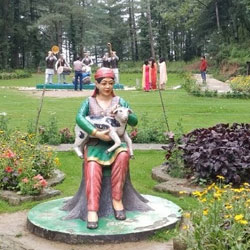
About Craignano Craignano is a picturesque tourist spot located in Shimla, Himachal Pradesh. Situated amidst lush greenery and offering stunning views of the surrounding mountains, Craignano is a popular destination for nature lovers and adventure enthusiasts. Location and Geographical Overview Craignano is located approximately 14 kilometers from the main city of Shimla, in a serene and tranquil setting. The area is surrounded by dense forests and offers a perfect retreat from the hustle and bustle of city life. Open and Closing Time Craignano is open to visitors from 9:00 AM to 6:00 PM every day of the week. Entry Fee The entry fee for Craignano is INR 20 per person, making it an affordable and accessible destination for all visitors. Species-Flora/Fauna Availability Craignano is home to a variety of flora and fauna, including rare plant species and diverse wildlife. Visitors can witness the beauty of the natural surroundings and observe the local biodiversity. Activities Performed Visitors to Craignano can indulge in a range of activities such as nature walks, bird watching, and picnicking. The serene atmosphere and scenic surroundings make it an ideal place for relaxation and rejuvenation. Jeep Safari Charges Jeep safari charges at Craignano vary depending on the duration and route. Visitors can inquire at the ticket counter for more information on pricing and availability. Age Criterion for Male, Female, Children, and Entry Fee There is no specific age criterion for entry to Craignano. Visitors of all ages are welcome to explore the natural beauty of the area. The entry fee is the same for males, females, and children at INR 20 per person. Senior Citizen Facilities Craignano offers facilities and amenities for senior citizens to ensure their comfort and convenience during their visit. Wheelchair access and designated resting areas are available for elderly visitors. Best Time to Visit The best time to visit Craignano is during the summer months from April to June when the weather is pleasant and ideal for outdoor activities. However, the area is also beautiful during the winter months when it is covered in snow. Nearby Places to Visit There are several popular tourist attractions near Craignano, including Mashobra, Naldehra, and Kufri. Visitors can explore these nearby places to experience more of the natural beauty and cultural heritage of Shimla. Vehicle Parking Facility Craignano has a designated parking area for visitors who wish to travel by their own vehicle. The parking facility is secure and well-maintained, providing convenience for guests during their visit. Rules and Regulations Visitors to Craignano are required to follow certain rules and regulations to ensure the safety and preservation of the natural environment. Littering, smoking, and disturbing wildlife are strictly prohibited. Visitors are also advised to respect the peaceful surroundings and maintain cleanliness. How to Reach and Other Related Information Craignano is easily accessible by road from Shimla city. Visitors can hire a taxi or take a local bus to reach the destination. The nearest airport is in Chandigarh, approximately 113 kilometers away. Accommodation options are available in Shimla for visitors who wish to stay overnight and explore the surrounding areas. Overall, Craignano offers a peaceful and rejuvenating experience for nature lovers and adventure seekers. With its stunning natural beauty, diverse flora and fauna, and range of activities, Craignano is a must-visit destination for those looking to escape the hustle and bustle of city life and immerse themselves in the serenity of the mountains.
Explore MoreTirupati Mangapura 1 Day Package -vip Sheegra Darshana- Pilgrimage Holidays Package from Bengaluru
2 Days/ 1 Night
Tirupati
3N Indore - Ujjain - Omkareshwer Tour
4 Days/ 3 Night
Indore - Ujjain - Omkareshwara
6D Gwalior - Khajuraho - Orchha Tour
6 Days/ 5 Night
Jhansi - Gwalior - Khajuraho - Orchha - Datia - Morena
Goa Tour Package For Family
4 Days/ 3 Night
Panaji - Goa City - North Goa - South Goa

About Lions Park Lions Park in Kozhikode (Calicut) is a popular tourist destination known for its abundant wildlife and scenic beauty. The park is home to a variety of flora and fauna, making it a must-visit for nature lovers and wildlife enthusiasts. Spread over a vast area, Lions Park offers visitors a chance to explore the natural habitat of various species in a safe and controlled environment. Location and Geographical Overview Lions Park is located in Kozhikode (Calicut), a city in the southern state of Kerala, India. The park is situated in a lush green area, surrounded by hills and forests, providing a serene and picturesque setting for visitors to enjoy. The geographical location of the park makes it an ideal place for wildlife viewing and nature walks. Open and Closing Time The park is open to visitors from 9:00 am to 5:00 pm every day of the week. Visitors are advised to check the official website or contact the park authorities for any changes in timings due to special events or holidays. Entry Fee There is a nominal entry fee for visitors to enter Lions Park. The fee may vary for adults, children, and senior citizens. Visitors are required to pay the entry fee at the ticket counter before entering the park. Species-Flora/Fauna Availability Lions Park is home to a diverse range of flora and fauna. Visitors can spot various species of birds, mammals, and reptiles in their natural habitat within the park. The lush greenery and well-maintained trails make it easy for visitors to explore and observe the different species present in the park. Activities Performed Visitors to Lions Park can engage in a variety of activities such as nature walks, bird watching, wildlife photography, and guided tours. The park authorities also organize special events and workshops for visitors to learn more about the local wildlife and conservation efforts. Jeep Safari Charges For visitors interested in a more immersive wildlife experience, jeep safaris are available at Lions Park. The safari charges may vary depending on the duration and route chosen by the visitors. Experienced guides accompany the visitors on the safari to ensure their safety and provide information about the wildlife in the park. Age Criterion for Male, Female, Children and their Entry Fee There may be specific age criteria for male, female, and children visitors to the park. The entry fee for each category may also vary, with discounted rates for children and senior citizens. Visitors are requested to check the official website or contact the park authorities for detailed information on entry fees and age criteria. Senior Citizen Facilities Lions Park offers special facilities for senior citizens to ensure their comfort and convenience during their visit. Wheelchair accessibility, resting areas, and guided tours tailored for seniors are some of the facilities provided by the park authorities. Senior citizens can enjoy a peaceful and leisurely experience at the park. Best Time to Visit The best time to visit Lions Park is during the cooler months of the year, from October to March. The weather is pleasant during this time, making it ideal for outdoor activities and wildlife viewing. Visitors are advised to avoid visiting the park during the monsoon season when heavy rainfall may disrupt their experience. Nearby Places to Visit There are several other popular tourist attractions near Lions Park that visitors can explore during their visit to Kozhikode (Calicut). Some of the nearby places to visit include beaches, historical monuments, and cultural sites that showcase the rich heritage of the region. Visitors can plan a day trip to nearby attractions and make the most of their visit to the area. Vehicle Parking Facility Lions Park provides ample parking space for visitors who wish to travel to the park by their own vehicle. The parking facility is well-maintained and secure, ensuring the safety of the parked vehicles. Visitors can park their cars or bikes conveniently and enjoy their visit to the park without any hassle. Rules and Regulations Visitors to Lions Park are required to follow certain rules and regulations to ensure the safety of the wildlife and the environment. Some of the common rules include maintaining cleanliness, not feeding the animals, staying on designated trails, and refraining from making loud noises. Visitors are expected to respect the natural habitat of the wildlife and abide by the rules set by the park authorities. How to Reach and Other Related Information Lions Park in Kozhikode (Calicut) is easily accessible by road, with well-connected highways leading to the park. Visitors can also opt for public transportation such as buses or taxis to reach the park from the city center. The nearest airport and railway station are located a few kilometers away from the park, providing convenient travel options for visitors coming from different parts of the country. Overall, Lions Park is a paradise for nature lovers and wildlife enthusiasts, offering a unique opportunity to experience the beauty of Kerala's natural landscape. Visitors can immerse themselves in the tranquility of the park, explore the diverse wildlife, and create lasting memories of their visit to this picturesque destination.
Explore More
About Chain Tree The Chain Tree in Wayanad is a popular tourist attraction known for its mysterious history and beautiful surroundings. The tree gets its name from the iron chain that hangs down from one of its branches, which is said to have a fascinating story behind it. Visitors come to marvel at the tree, learn about its history, and enjoy the tranquil atmosphere of the area. Location and Geographical Overview The Chain Tree is located on the Calicut-Bangalore highway in Lakkidi, Wayanad. It is situated amidst lush greenery and offers stunning views of the surrounding mountains and valleys. The area is known for its cool climate and refreshing breeze, making it a perfect escape from the hustle and bustle of city life. Opening and Closing Time The Chain Tree is open to visitors from 9:00 AM to 6:00 PM every day of the week. Entry Fee There is no entry fee to visit the Chain Tree, making it a budget-friendly attraction for tourists of all ages. Species-Flora/Fauna Availability The area around the Chain Tree is abundant with various species of flora and fauna. Visitors can spot different types of trees, plants, and birds while exploring the surroundings of the tree. Activities Performed Visitors to the Chain Tree can indulge in activities like nature walks, bird watching, and photography. The serene atmosphere of the area makes it a perfect spot for spending quality time with friends and family. Jeep Safari Charges If you are interested in exploring the nearby area through a jeep safari, there are tour operators who offer packages at affordable rates. The charges may vary depending on the duration of the safari and the number of people participating. Age Criterion and Entry Fee There is no specific age criterion for visiting the Chain Tree. Visitors of all ages are welcome to explore the area free of cost. However, children must be accompanied by adults for their safety. Senior Citizen Facilities The Chain Tree offers facilities for senior citizens, including benches for resting and easy access to the site. The serene surroundings make it a perfect place for elderly visitors to relax and enjoy the natural beauty of the area. Best Time to Visit The best time to visit the Chain Tree is during the monsoon season when the surrounding landscape is lush and vibrant. The cool weather and occasional drizzles add to the charm of the place, making it a refreshing getaway for nature lovers. Nearby Places to Visit While you are in Wayanad, you can explore other nearby attractions such as Pookode Lake, Banasura Sagar Dam, Soochipara Waterfalls, and Edakkal Caves. These places offer unique experiences and stunning views, adding to the overall charm of your trip. Vehicle Parking Facility There is a designated parking area near the Chain Tree where visitors can safely park their vehicles. The facility is convenient for those who are traveling by car or bike and adds to the comfort of their visit. Rules and Regulations While visiting the Chain Tree, visitors are expected to maintain the cleanliness of the area and respect the natural surroundings. Littering is strictly prohibited, and visitors are encouraged to follow the guidelines set by the authorities to ensure the preservation of the environment. How to Reach and Other Related Information The Chain Tree is easily accessible by road, and visitors can reach the site via private vehicles or public transportation. The nearest major town is Kalpetta, which is well-connected to other cities in Kerala. For those traveling from out of state, the nearest airport is Kozhikode International Airport, which is approximately 100 kilometers away from the Chain Tree. Overall, the Chain Tree in Wayanad is a must-visit destination for nature enthusiasts, history buffs, and anyone looking to experience the beauty of Kerala's natural landscapes. With its intriguing history, serene surroundings, and opportunities for exploration, the Chain Tree offers a memorable experience for visitors of all ages.
Explore More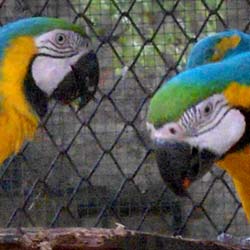
About The Zoological Park The Zoological Park, also known as the Trivandrum Zoo, is one of the oldest and most well-maintained zoos in India. Located in the heart of Thiruvananthapuram, the capital city of Kerala, this zoo is spread across 55 acres of lush greenery. Established in 1857, the zoo is home to a wide variety of animals, birds, and reptiles, making it a popular attraction among wildlife enthusiasts and nature lovers. Location and Geographical Overview The Zoological Park is situated in the heart of Thiruvananthapuram, Kerala, making it easily accessible for both locals and tourists. The zoo is located near the Napier Museum and is just a short distance away from the city center. Surrounded by lush greenery and beautiful landscapes, the zoo offers a serene environment for visitors to explore and enjoy nature. Open and Closing Time The Zoological Park is open to visitors from 9:00 AM to 5:00 PM every day of the week, including weekends and public holidays. Visitors are advised to plan their visit accordingly to make the most of their time at the zoo. Entry Fee The entry fee for The Zoological Park is Rs. 20 per adult and Rs. 10 per child. Visitors can also opt for a group ticket, which is priced at Rs. 50 for a group of five members. Senior citizens above the age of 60 are entitled to a discounted entry fee of Rs. 10. Species-Flora/Fauna Availability The Zoological Park houses a diverse range of species, including mammals, birds, reptiles, and amphibians. Visitors can witness rare and exotic animals such as lions, tigers, elephants, giraffes, and various species of birds and reptiles. The zoo also boasts a rich collection of flora, with lush gardens and greenery spread throughout the premises. Activities Performed Visitors to The Zoological Park can engage in a variety of activities, including guided tours, animal feeding sessions, and educational programs. The zoo also organizes special events and workshops for children and adults, providing a fun and interactive learning experience for visitors of all ages. Jeep Safari Charges The Zoological Park offers a thrilling jeep safari experience for visitors who wish to explore the wildlife sanctuary from a different perspective. The jeep safari charges vary depending on the duration and route chosen by the visitors, with prices starting from Rs. 500 per person. Age Criterion and Entry Fee Children below the age of 5 are granted free entry to The Zoological Park. Entry for children between the ages of 5 and 12 is priced at Rs. 10. For male and female visitors above the age of 12, the entry fee is Rs. 20. Senior citizens above the age of 60 can avail of a discounted entry fee of Rs. 10. Senior Citizen Facilities The Zoological Park offers special facilities and services for senior citizens to ensure their comfort and convenience during their visit. These facilities include designated rest areas, wheelchair access, and assistance from zoo staff for elderly visitors who require support. Best Time to Visit The best time to visit The Zoological Park is during the winter months, from November to February, when the weather is pleasant and cool. Visitors are advised to avoid visiting during the summer months, as the heat can be intense and uncomfortable for exploring the zoo. Nearby Places to Visit Located in the heart of Thiruvananthapuram, The Zoological Park is surrounded by several other popular attractions that visitors can explore. Nearby places of interest include the Napier Museum, Kuthiramalika Palace, and the Shanghumukham Beach, offering a diverse range of experiences for tourists. Vehicle Parking Facility The Zoological Park provides ample parking space for visitors who wish to drive to the zoo. A designated parking area is available near the entrance, ensuring easy access and convenience for those traveling by car or two-wheeler. Rules and Regulations Visitors to The Zoological Park are required to adhere to a set of rules and regulations to ensure the safety and well-being of the animals and the premises. Some of the key rules include refraining from feeding the animals, littering, smoking, or causing any disturbance to the wildlife. Photography is allowed but with caution to not disturb the animals. How to Reach and Other Related Information The Zoological Park is easily accessible by road, rail, and air, making it a convenient destination for visitors from across the country. The zoo is located just a short distance away from Thiruvananthapuram Central Railway Station and Trivandrum International Airport, with various transportation options available to reach the zoo. Visitors can also opt for local buses or taxis to reach the zoo from any part of the city. Overall, The Zoological Park in Thiruvananthapuram offers a unique and enriching experience for wildlife enthusiasts and nature lovers, providing a glimpse into the diverse flora and fauna of the region. With its picturesque surroundings, diverse species, and engaging activities, the zoo is a must-visit destination for visitors of all ages.
Explore More
About Thiruvananthapuram Zoo The Thiruvananthapuram Zoo, also known as the Trivandrum Zoo, is one of the oldest and most well-maintained zoos in India. Located in the heart of Thiruvananthapuram, the capital city of Kerala, the zoo is spread over 55 acres of lush greenery and houses a wide variety of animals, birds, and reptiles. Established in 1857 by the erstwhile Maharaja of Travancore, the zoo has been a popular destination for both locals and tourists alike. Location and Geographical Overview The Thiruvananthapuram Zoo is situated in the Museum Compound, in the heart of the city. The zoo is easily accessible by both public and private transport, and is located near the famous Napier Museum and the Kanakakunnu Palace. The lush green surroundings and well-maintained pathways make it a serene and enjoyable place to visit. Opening and Closing Time The Thiruvananthapuram Zoo is open to visitors from 9:00 AM to 5:00 PM on all days of the week, except Mondays. The zoo remains closed on Mondays for maintenance purposes. Entry Fee The entry fee for adults is Rs. 50, for children (ages 5-12) is Rs. 20, and for students with a valid ID card is Rs. 30. Foreign tourists are charged Rs. 100 for entry. Senior citizens (ages 65 and above) are granted free entry to the zoo. Species-Flora/Fauna Availability The Thiruvananthapuram Zoo is home to a wide variety of species, including mammals, birds, reptiles, and fish. The zoo houses exotic animals like lions, tigers, elephants, giraffes, zebras, and many more. The zoo also has a diverse collection of birds, ranging from peacocks to parrots. The lush greenery within the zoo provides a natural habitat for the animals, making it a truly unique experience for visitors. Activities Performed Visitors to the Thiruvananthapuram Zoo can enjoy a range of activities, including guided tours, animal feeding sessions, and interactive shows. The zoo also organizes educational programs for school children and conducts awareness campaigns on wildlife conservation. Visitors can also purchase souvenirs and snacks from the various stalls located within the zoo premises. Jeep Safari Charges The Thiruvananthapuram Zoo offers a jeep safari for visitors who wish to explore the zoo in a unique way. The charges for the jeep safari vary depending on the duration of the safari and the number of participants. Visitors can inquire about the safari charges at the ticket counter upon arrival. Age Criterion and Entry Fee Children below the age of 5 are granted free entry to the Thiruvananthapuram Zoo. The entry fee for children aged 5-12 is Rs. 20, whereas adults are charged Rs. 50 for entry. Students with a valid ID card are charged Rs. 30, while foreign tourists are charged Rs. 100 for entry. Senior Citizen Facilities Senior citizens (ages 65 and above) are granted free entry to the Thiruvananthapuram Zoo. The zoo offers special facilities for senior citizens, including seating areas, restrooms, and easy access to all exhibits. Wheelchairs are also available for elderly visitors upon request. Best Time to Visit The best time to visit the Thiruvananthapuram Zoo is during the winter months, from November to February, when the weather is cool and pleasant. The animals are also more active during this time, making it an ideal time for a visit. However, the zoo remains open throughout the year, so visitors can plan their visit according to their convenience. Nearby Places to Visit Located in the heart of Thiruvananthapuram, the zoo is surrounded by several other popular tourist attractions. Visitors can explore the nearby Napier Museum, Kanakakunnu Palace, and the famous Kowdiar Palace. The picturesque Kovalam Beach is also located just a short drive away from the zoo. Vehicle Parking Facility The Thiruvananthapuram Zoo provides ample parking space for visitors who wish to bring their vehicles. The parking facility is well-maintained and secure, ensuring the safety of visitors' vehicles. Visitors can park their cars or bikes at the designated parking area near the entrance of the zoo. Rules and Regulations Visitors to the Thiruvananthapuram Zoo are required to follow certain rules and regulations to ensure the safety of the animals and other visitors. Smoking, littering, and feeding the animals are strictly prohibited within the zoo premises. Visitors are also advised to maintain silence and not disturb the animals during their visit. How to Reach and Other Related Information The Thiruvananthapuram Zoo is easily accessible by both public and private transport. The zoo is located in the heart of the city, near the Museum Compound, making it a convenient destination for visitors. The nearest railway station is Thiruvananthapuram Central, which is well-connected to major cities across India. The Trivandrum International Airport is located just 6 km away from the zoo, making it easily accessible for international tourists as well. Overall, the Thiruvananthapuram Zoo offers a unique and immersive experience for visitors of all ages. With its diverse collection of animals, lush greenery, and interactive activities, the zoo is a must-visit destination for nature lovers and wildlife enthusiasts.
Explore More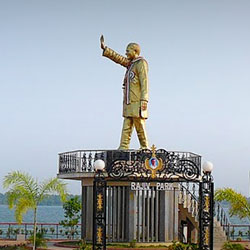
About Rajiv Gandhi Park Vijayawada Rajiv Gandhi Park, located in Vijayawada, is a popular recreational destination for locals and tourists alike. Named after the former Prime Minister of India, Rajiv Gandhi, the park boasts lush greenery, beautiful landscapes, and a variety of flora and fauna. The park offers visitors a peaceful retreat from the hustle and bustle of city life, making it a must-visit destination for nature lovers and outdoor enthusiasts. Location and Geographical Overview Rajiv Gandhi Park is situated in the heart of Vijayawada, near the Prakasam Barrage. The park covers an area of approximately 25 acres and is surrounded by the picturesque Krishna River. The park's strategic location offers visitors stunning views of the river and the city skyline, making it a perfect spot for a relaxing day out in nature. Open and Closing Time The park is open to visitors from 6:00 AM to 6:00 PM every day of the week. Visitors are advised to plan their visit accordingly to enjoy the park's attractions and activities. Entry Fee Entry to Rajiv Gandhi Park is free for all visitors, making it an affordable and accessible destination for families, groups, and individuals looking to enjoy the beauty of nature. Species-Flora/Fauna Availability Rajiv Gandhi Park is home to a diverse range of flora and fauna, including numerous plant species, trees, flowers, and birds. Visitors can explore the park's well-maintained gardens, walking trails, and birdwatching spots to admire the natural beauty of the surroundings. Activities Performed Visitors to Rajiv Gandhi Park can engage in a variety of activities such as leisurely walks, picnics, nature photography, birdwatching, and meditation. The park's serene environment and well-designed landscape provide the perfect setting for relaxation and rejuvenation. Jeep Safari Charges Rajiv Gandhi Park offers visitors the opportunity to experience a thrilling jeep safari through the park's natural surroundings. The charges for the jeep safari vary based on the duration of the safari and the number of participants. Visitors can inquire about the safari charges at the park's entrance. Age Criterion and Entry Fee Visitors of all ages are welcome at Rajiv Gandhi Park, with separate entry fees for male, female, and children. The entry fee for senior citizens may be discounted or waived, depending on the park's policies. Visitors are advised to check the park's rules and regulations for age-specific entry criteria and fees. Senior Citizen Facilities Rajiv Gandhi Park provides special facilities for senior citizens, including designated seating areas, walking paths, and restrooms. The park's management ensures that senior visitors can enjoy a comfortable and safe experience while exploring the park's attractions. Best Time to Visit The best time to visit Rajiv Gandhi Park is during the early morning or late afternoon when the weather is mild and the park is less crowded. Visitors can enjoy the park's tranquility, natural beauty, and recreational activities during these times of the day. Nearby Places to Visit Visitors to Rajiv Gandhi Park can explore nearby attractions such as the Prakasam Barrage, Bhavani Island, Kanaka Durga Temple, and Undavalli Caves. These popular tourist destinations offer visitors a glimpse into the rich history, culture, and natural beauty of Vijayawada and its surroundings. Vehicle Parking Facility Rajiv Gandhi Park provides ample parking space for visitors' vehicles, including cars, bikes, and buses. Visitors can conveniently park their vehicles near the park's entrance and enjoy a hassle-free visit to the park's attractions and amenities. Rules and Regulations Visitors to Rajiv Gandhi Park are required to follow certain rules and regulations to ensure a safe and enjoyable experience for everyone. Some of the park's rules include maintaining cleanliness, avoiding littering, respecting wildlife, and following designated pathways. Visitors are advised to adhere to the park's rules and regulations for their own safety and the preservation of the park's natural environment. How to Reach and Other Related Information Rajiv Gandhi Park is easily accessible by road, with regular buses, taxis, and private vehicles serving the park's vicinity. The park's central location in Vijayawada makes it a convenient destination for visitors from all parts of the city. Visitors can also explore nearby attractions and amenities such as restaurants, hotels, and shopping centers in the vicinity of the park. Overall, Rajiv Gandhi Park in Vijayawada is a serene and picturesque destination for nature lovers, outdoor enthusiasts, and families looking to unwind and connect with nature. The park's lush landscapes, diverse flora and fauna, and recreational activities make it a must-visit destination for visitors of all ages. Whether you're looking for a peaceful retreat, a leisurely stroll, or an exciting jeep safari adventure, Rajiv Gandhi Park has something for everyone to enjoy.
Explore More
Thimmamma Marrimanu is an ancient Banyan tree that lies in the district of Anantapur in Andhra Pradesh. It is a well-known attraction that is visited daily by the tourists from the different directions of the state. This place, where the Banyan tree stands, has an interesting tale. It is said that a woman named Thimmamma served her ailing husband with a complete devotion. After his demise, she committed Sati. It is believed that this tree has grown at the same place where she breathed her last. The Religious Significance:-Thimmamma Marrimanu has a religious significance among the people. A small temple was built and dedicated to Thimmamma. It is said that a childless couple is blessed with a child after praying here. The festival of Mahashivaratri is also celebrated here with a great enthusiasm. Best Time To Visit:-Thimmamma Marrimanu can be visited throughout the year. Being a famous travel attraction, people visit this place on a daily basis. One has not to wait for a specific time or season for visiting this place. Reaching There:-Thimmamma Marrimanu is a famous attraction in Anantapur district. Since it is located in a bustling area, it can be accessed without any inconvenience. The local transports like cabs, buses, and autos are available to reach Thimmamma Marrimanu. Nearest Railway Station- Anantapur Railway StationNearest Airport- Bangalore Airport
Explore More